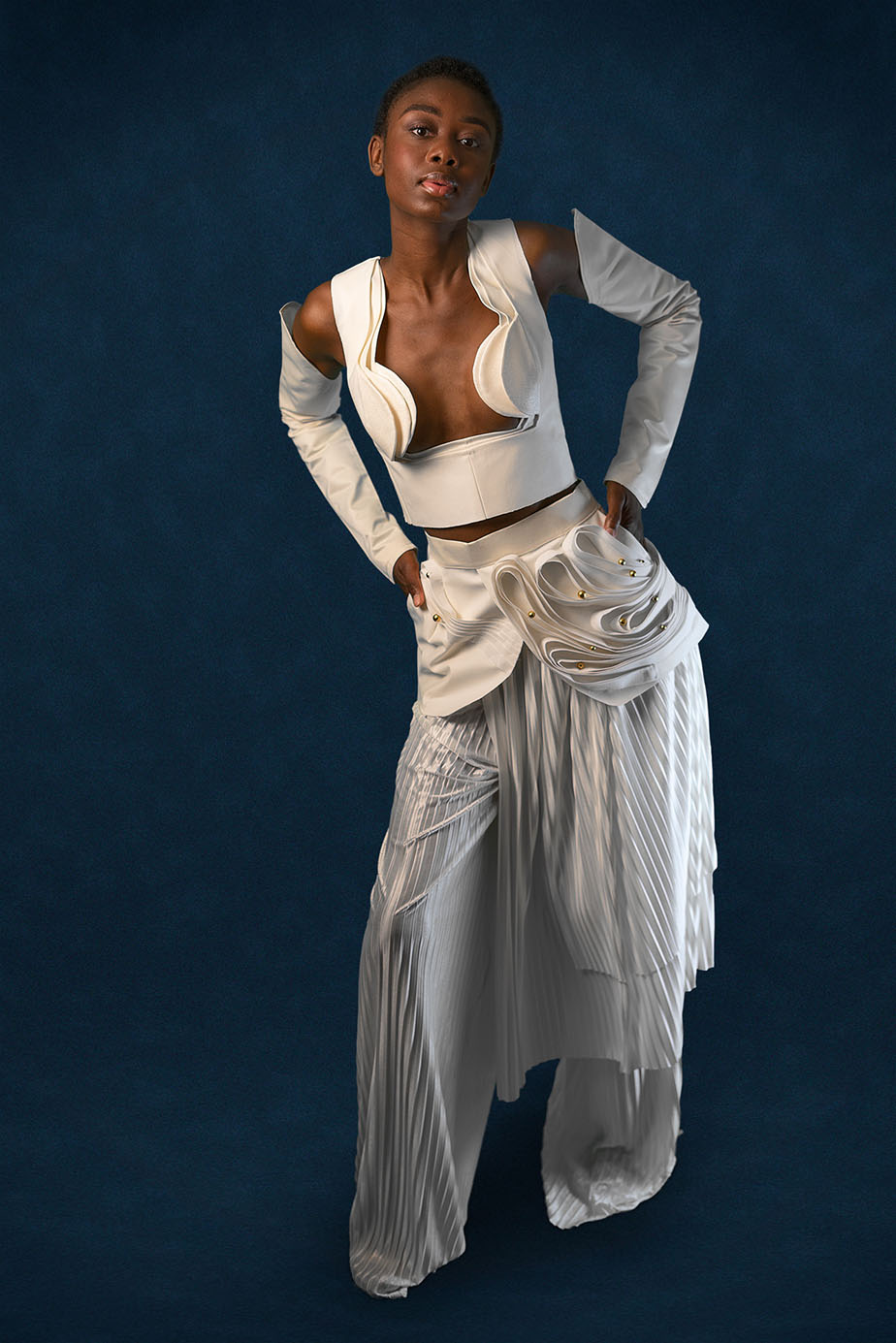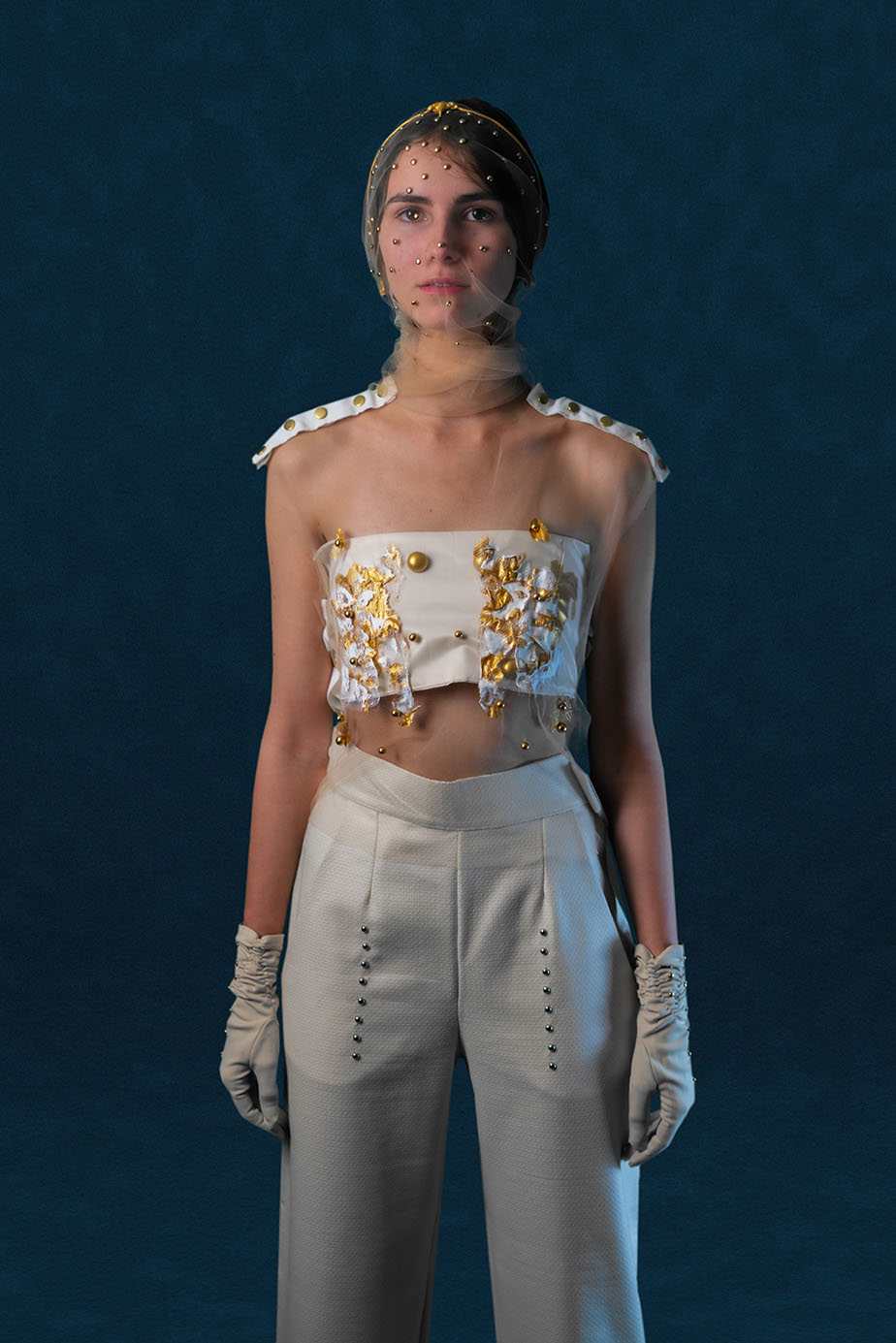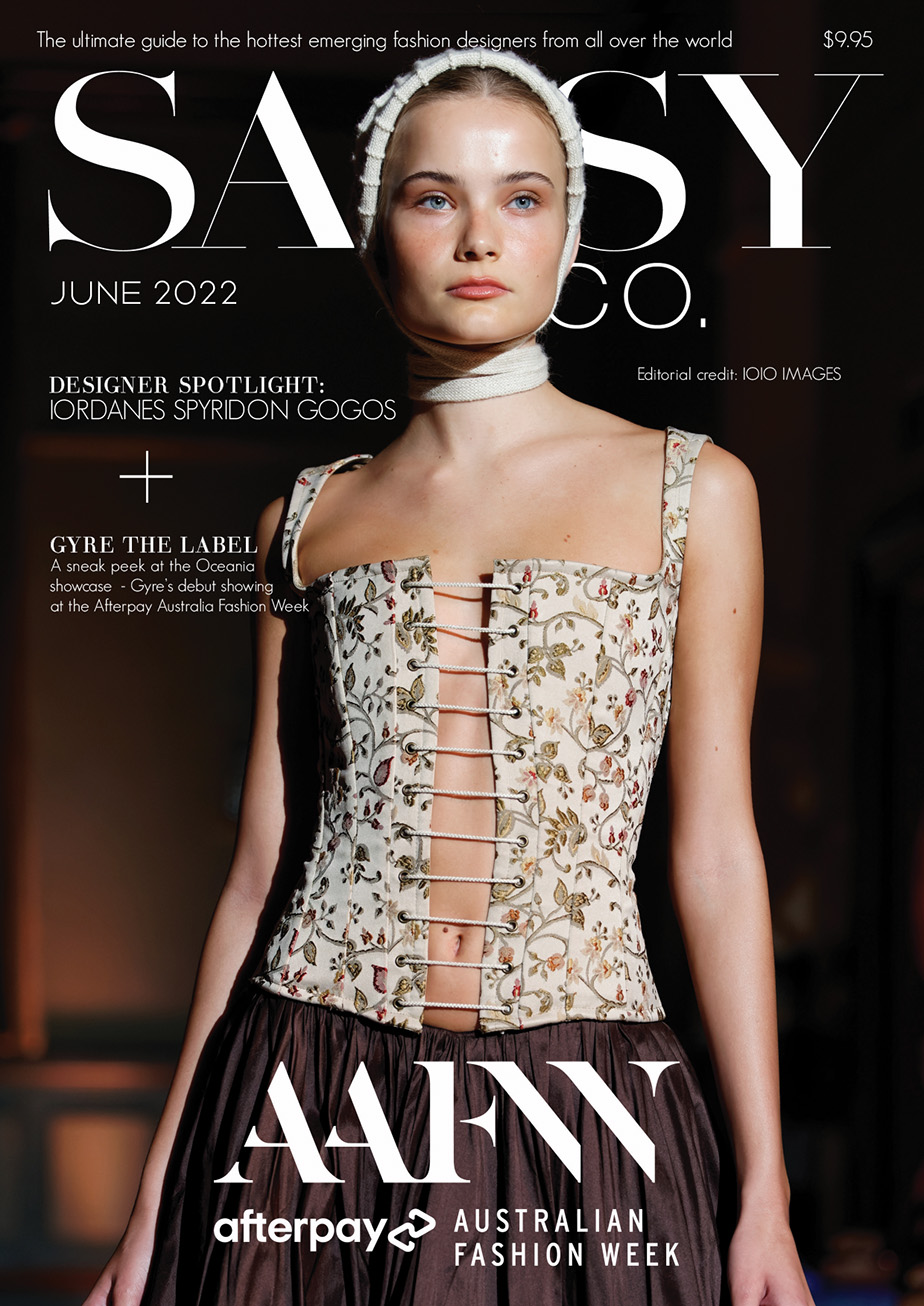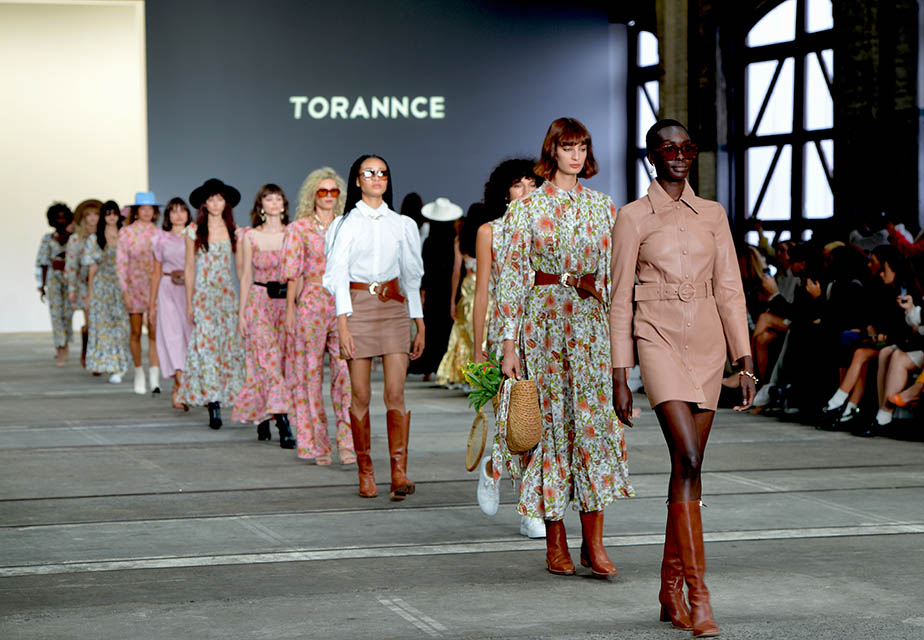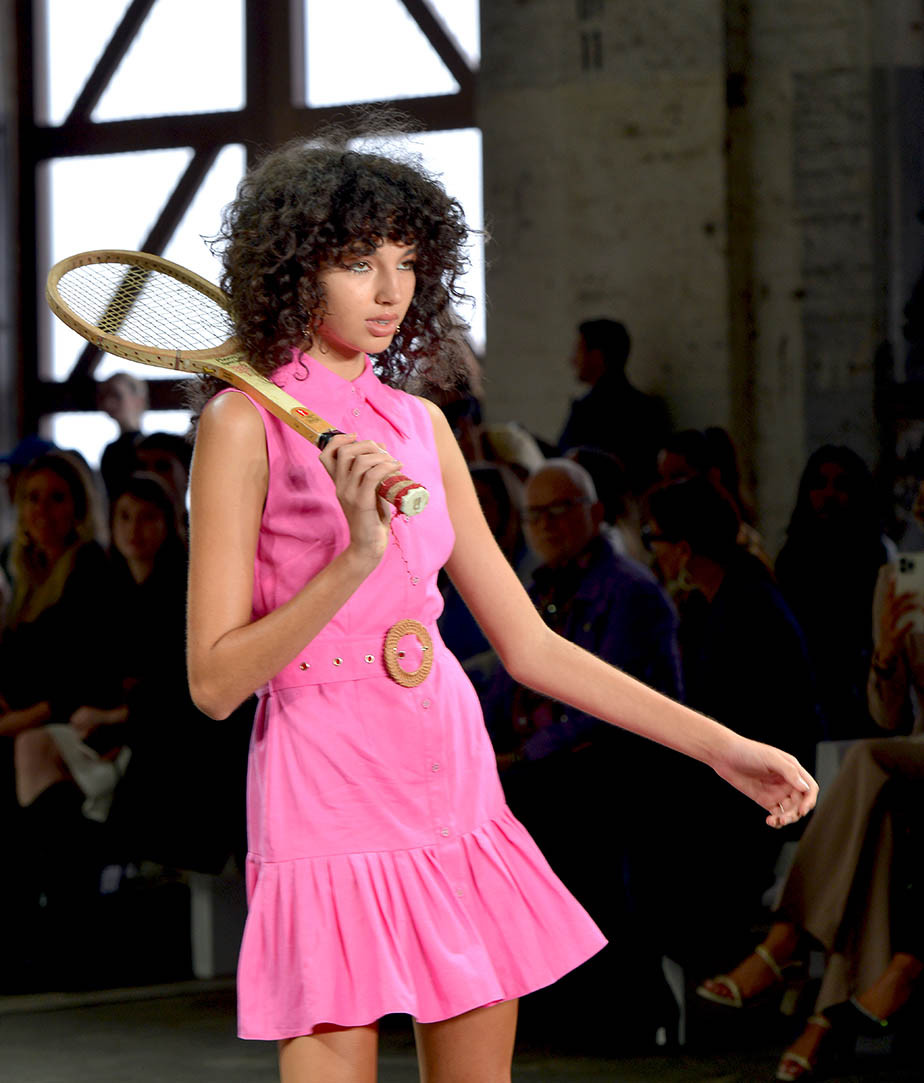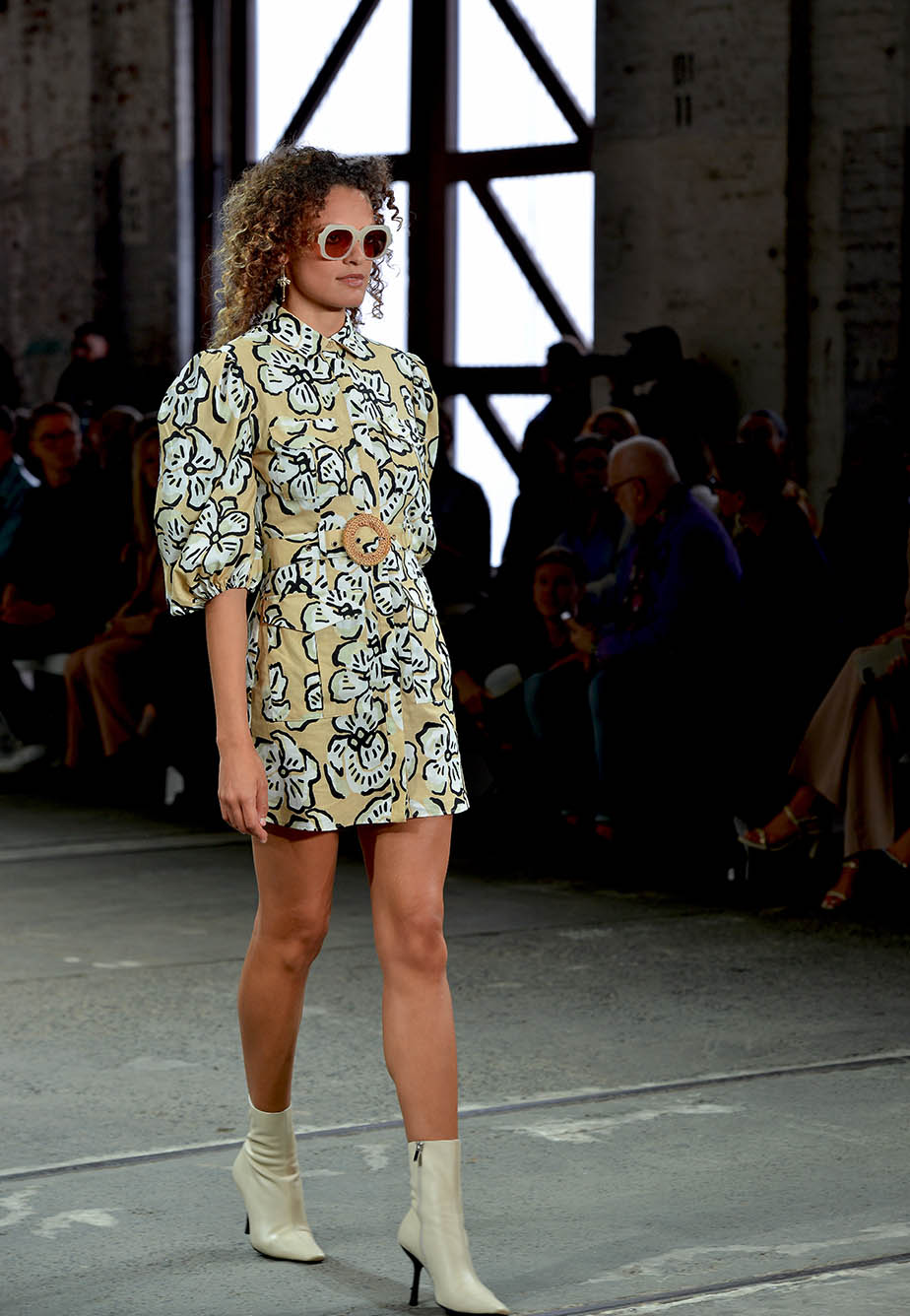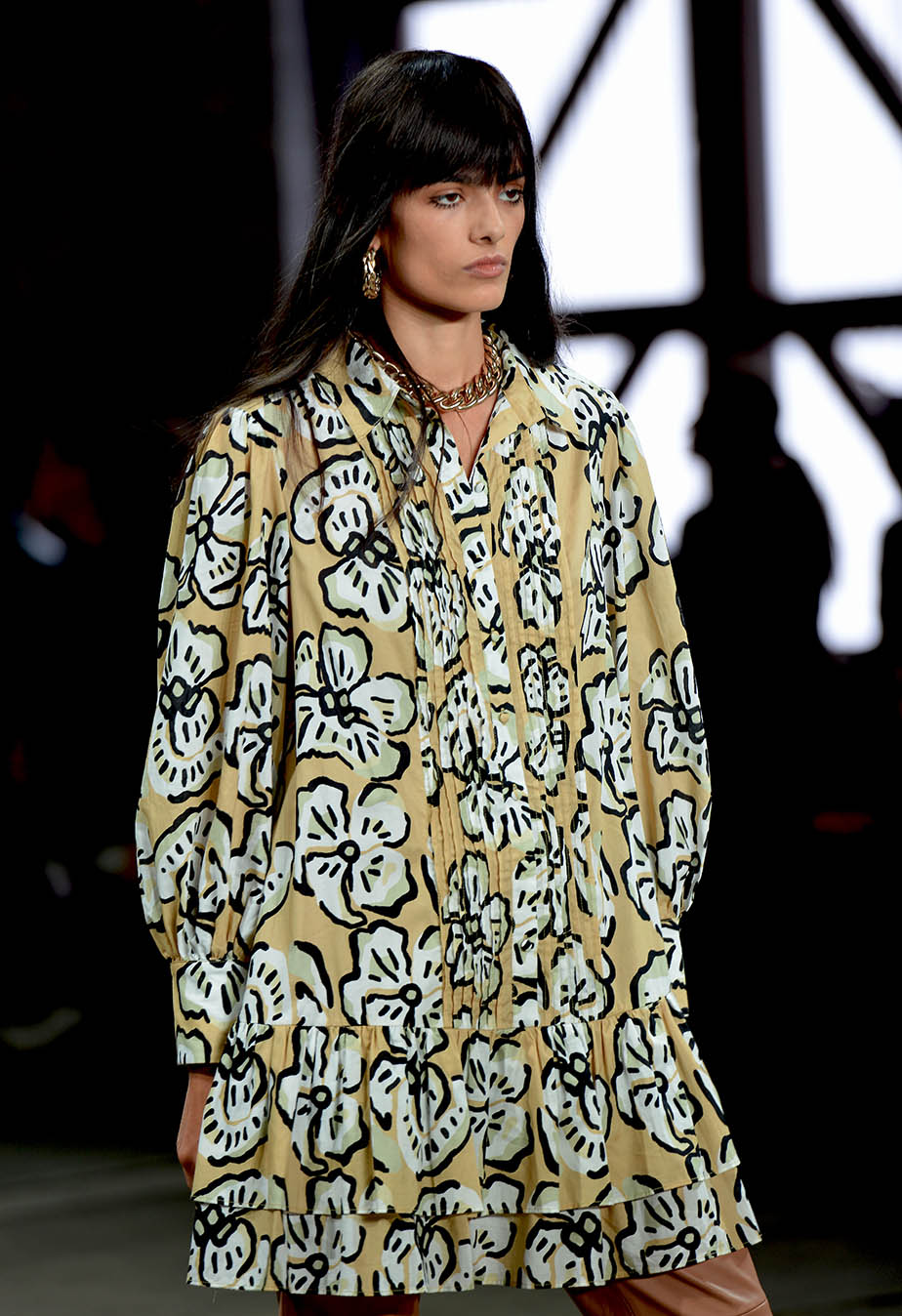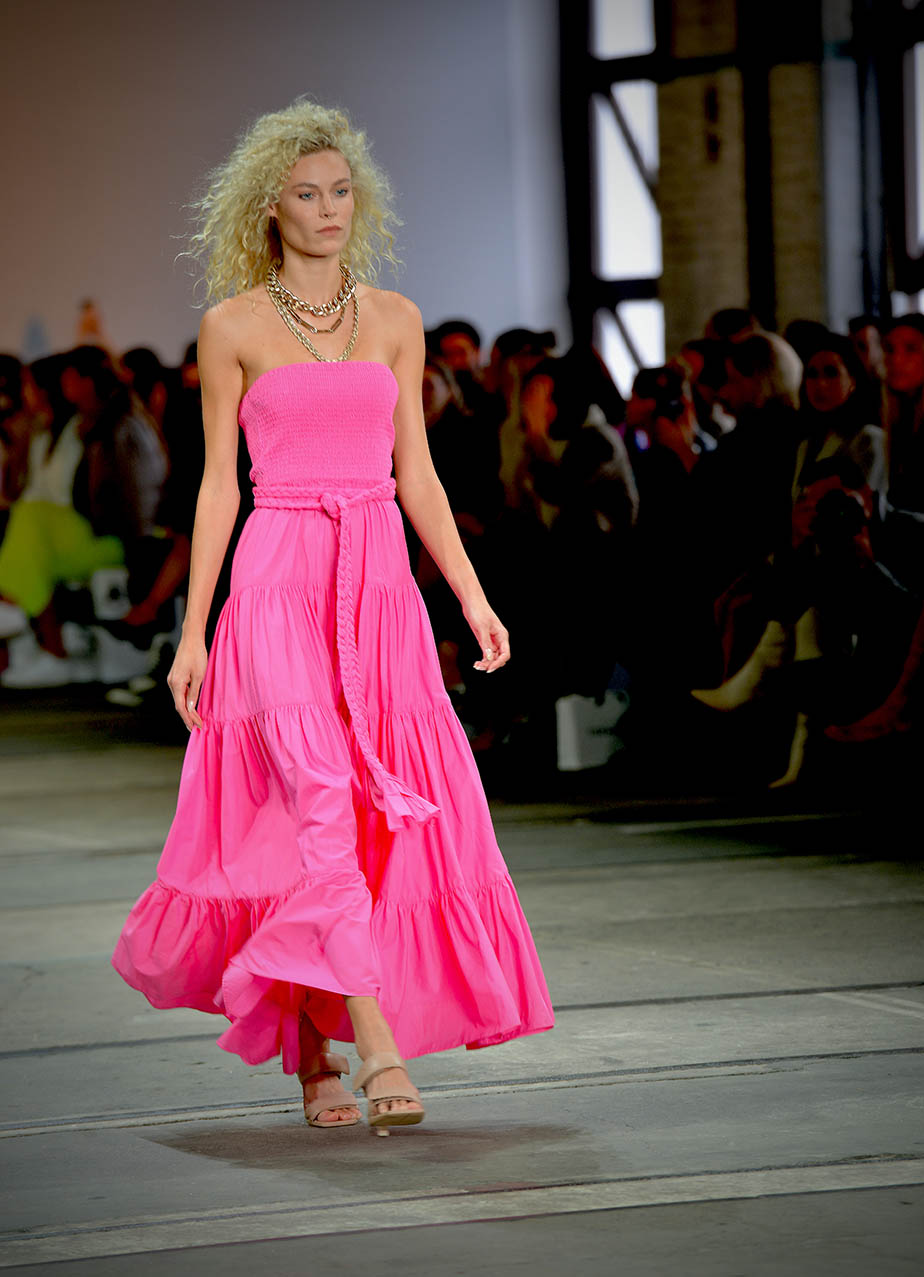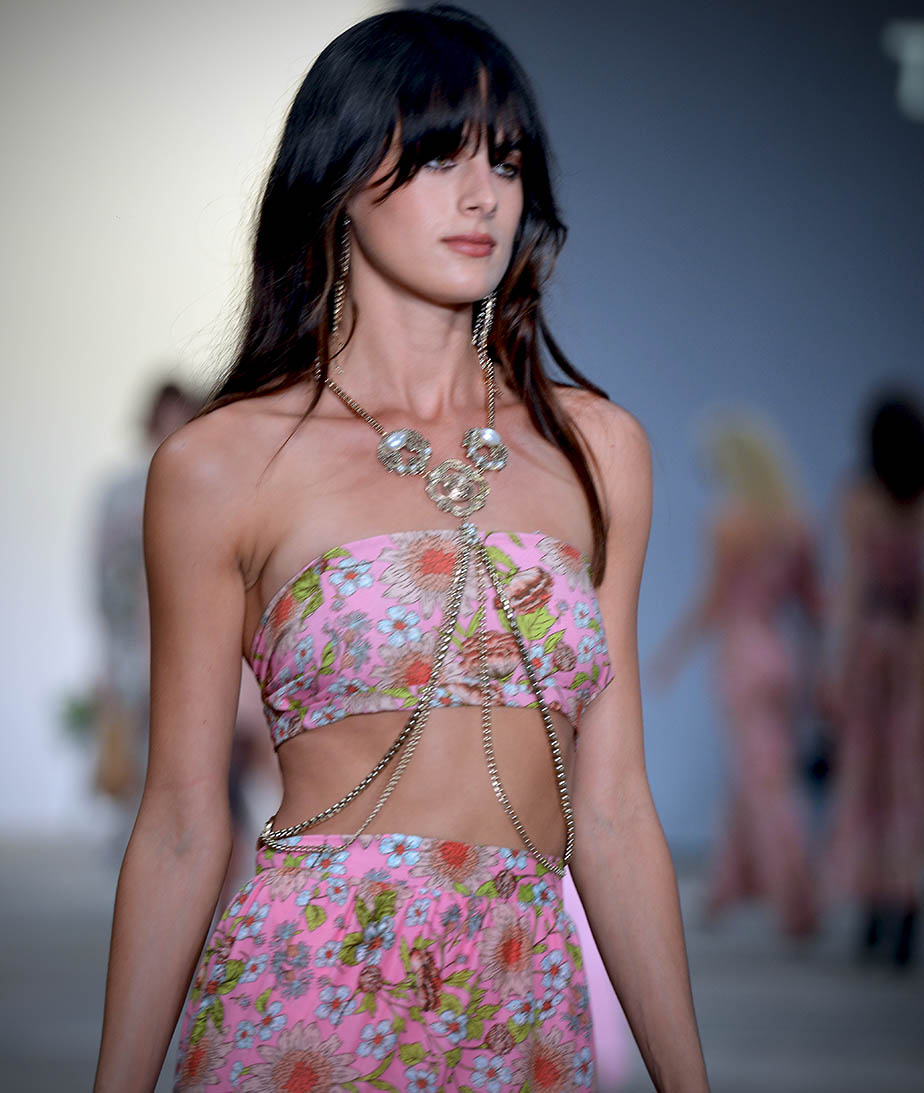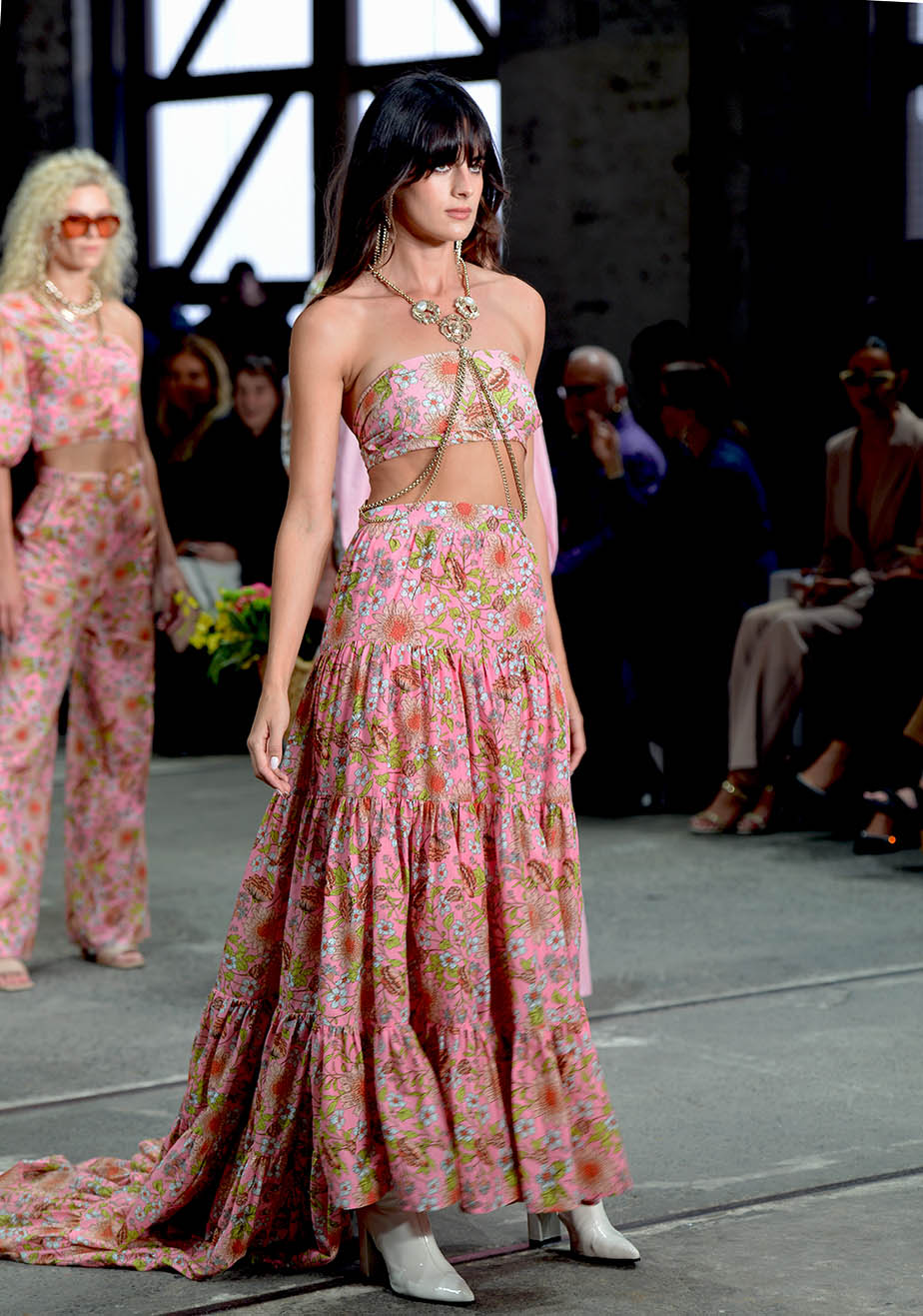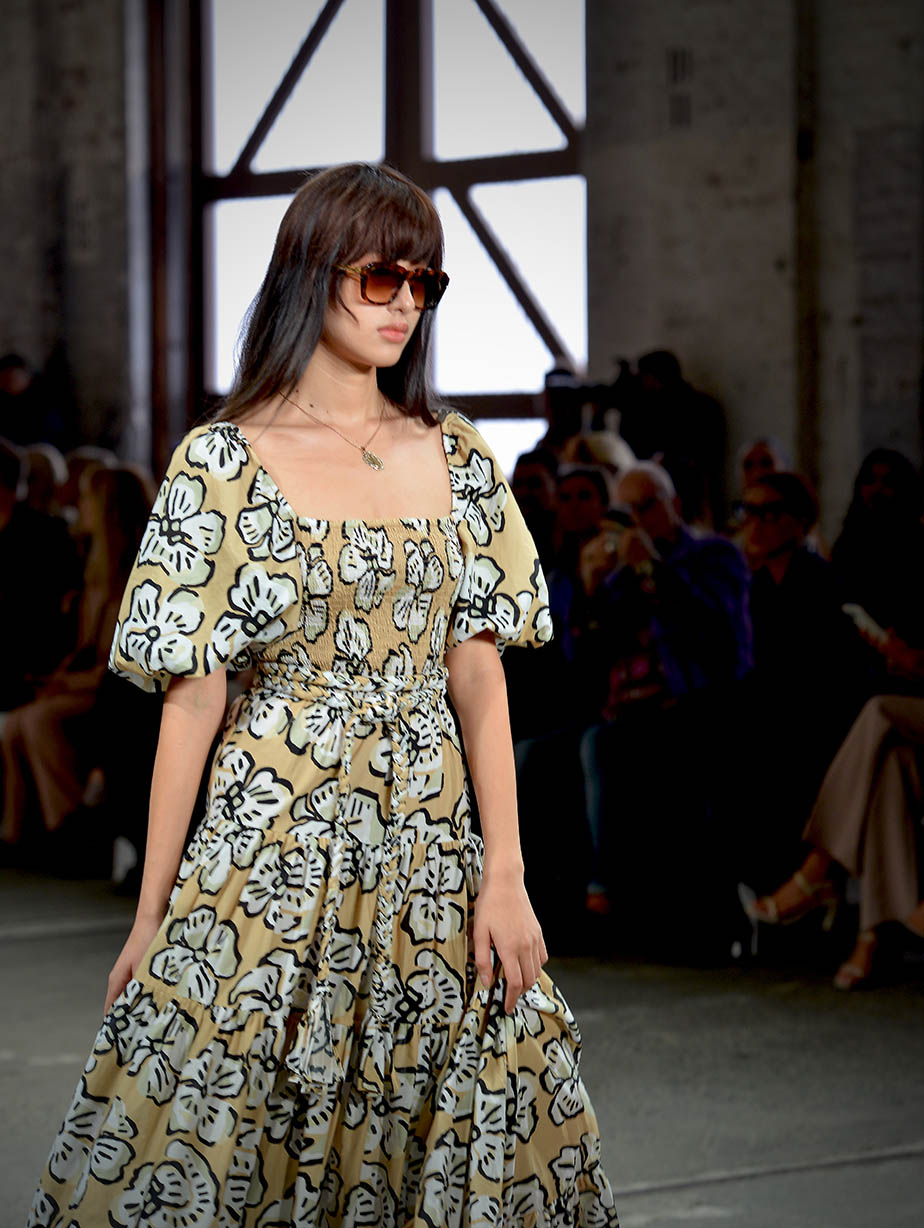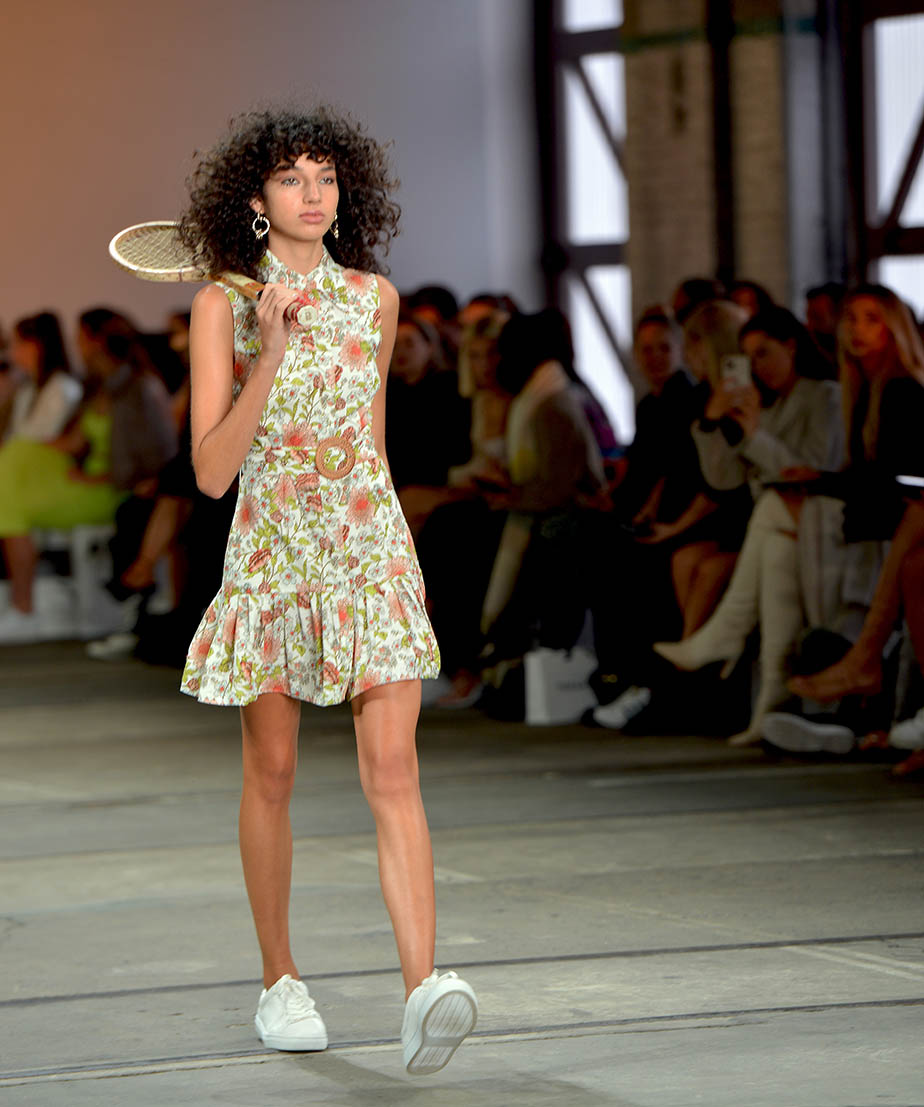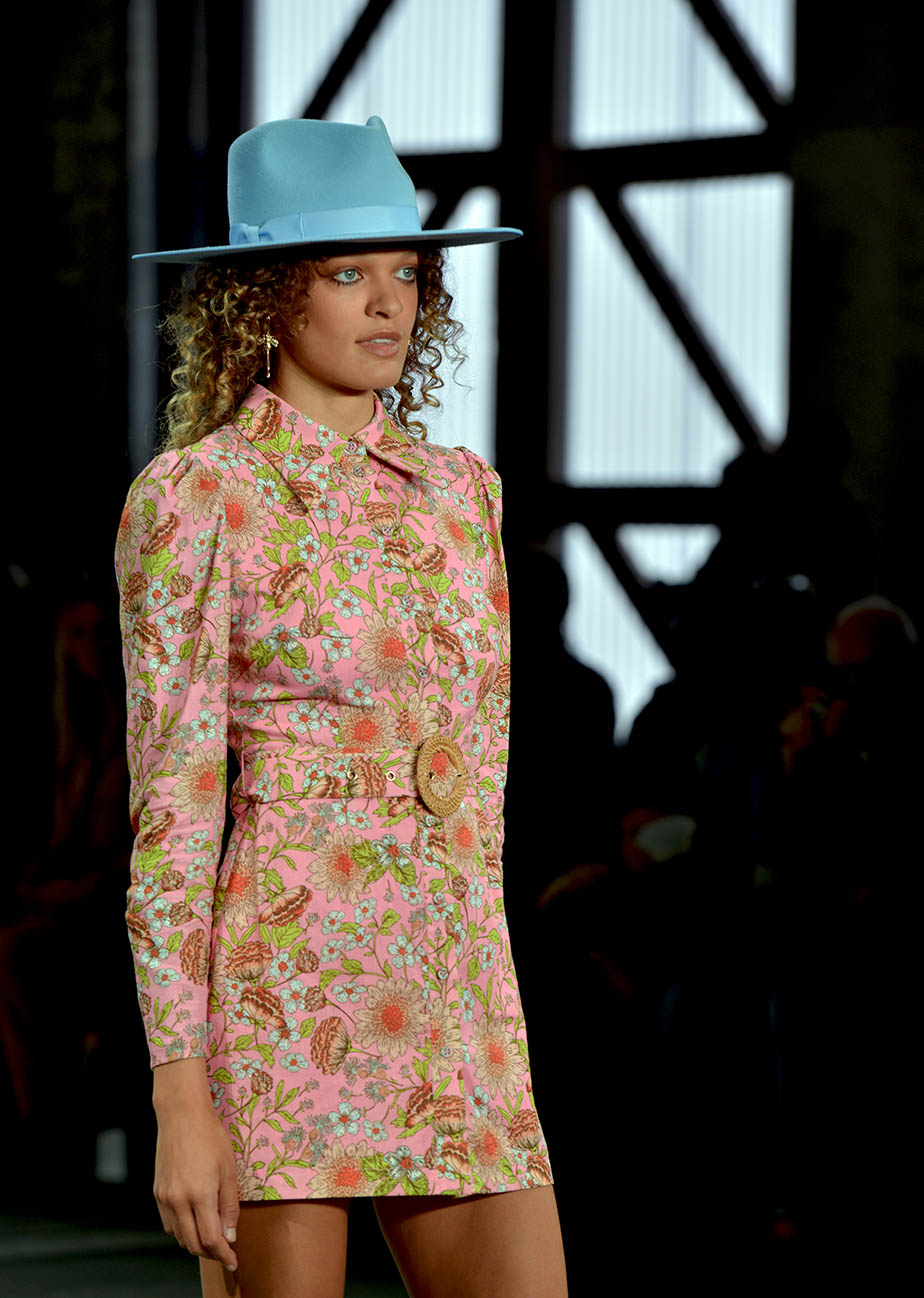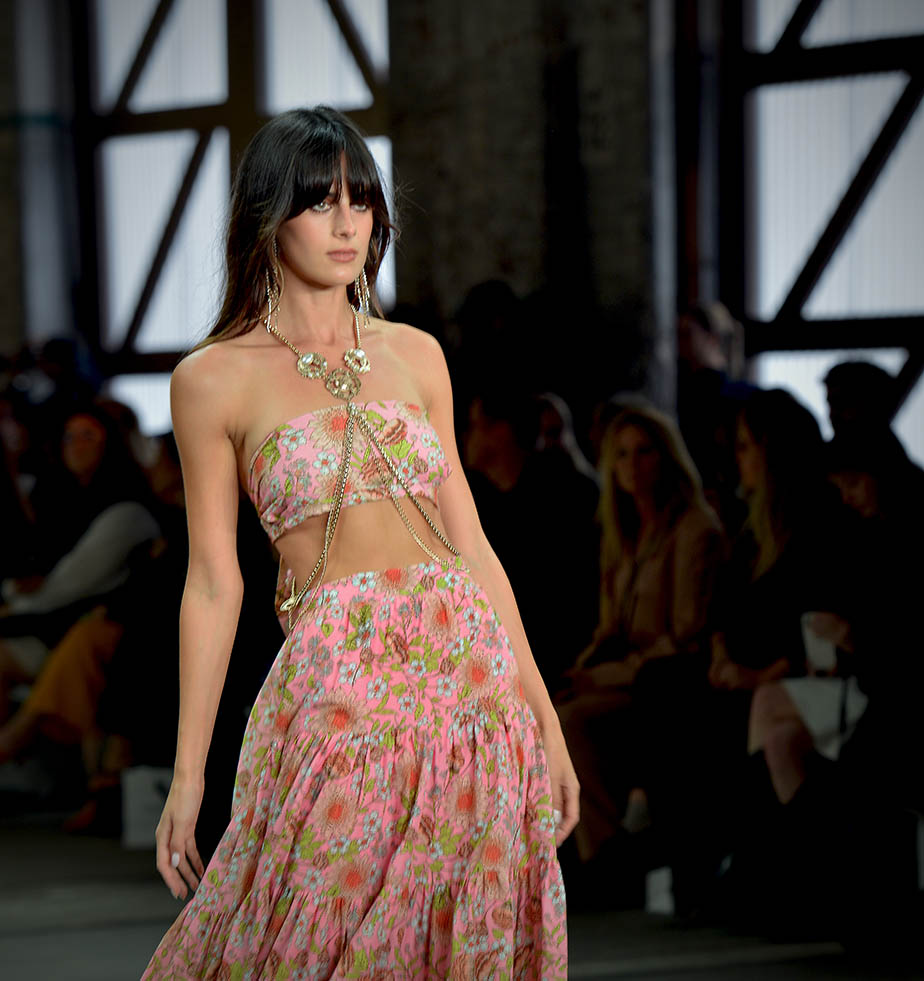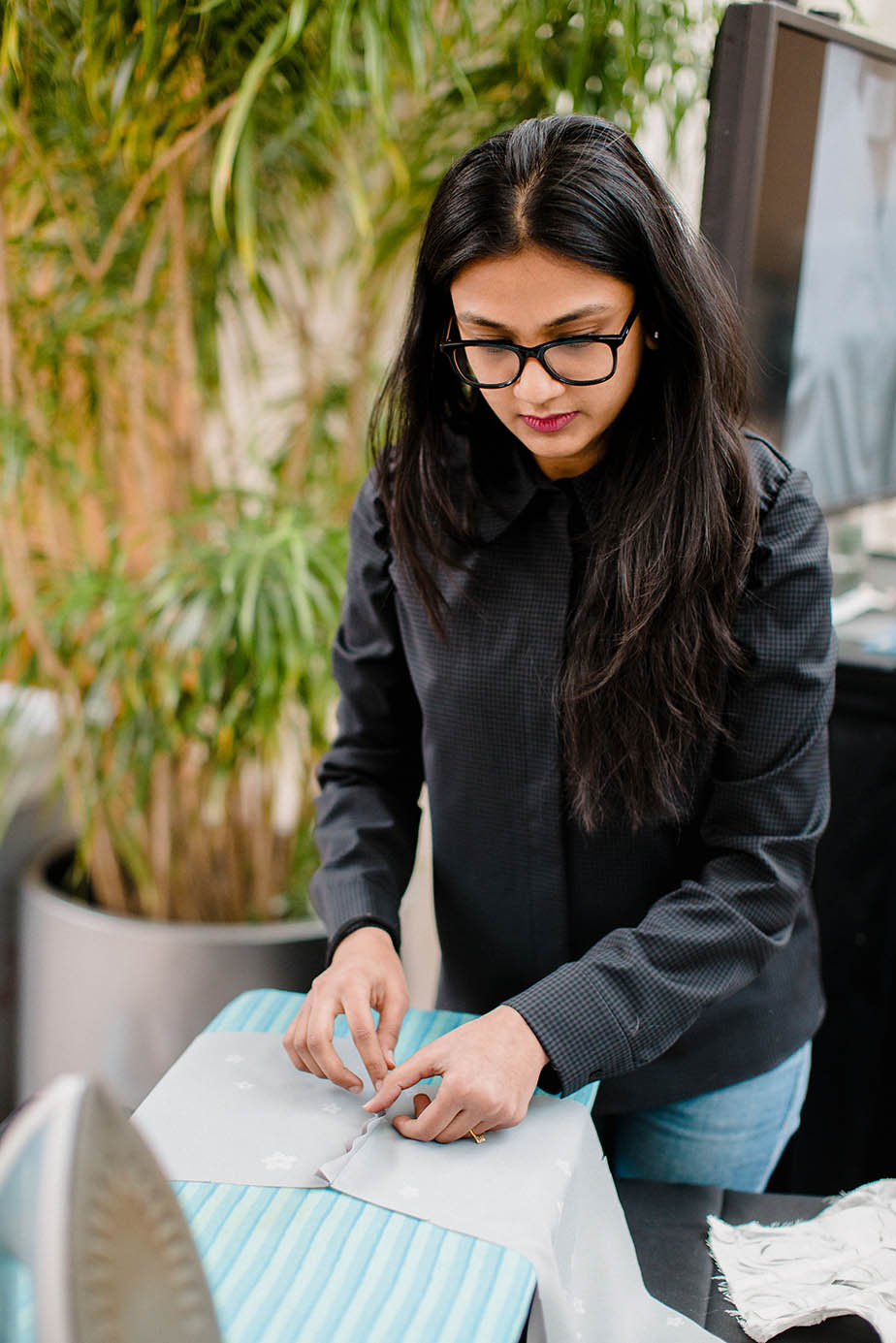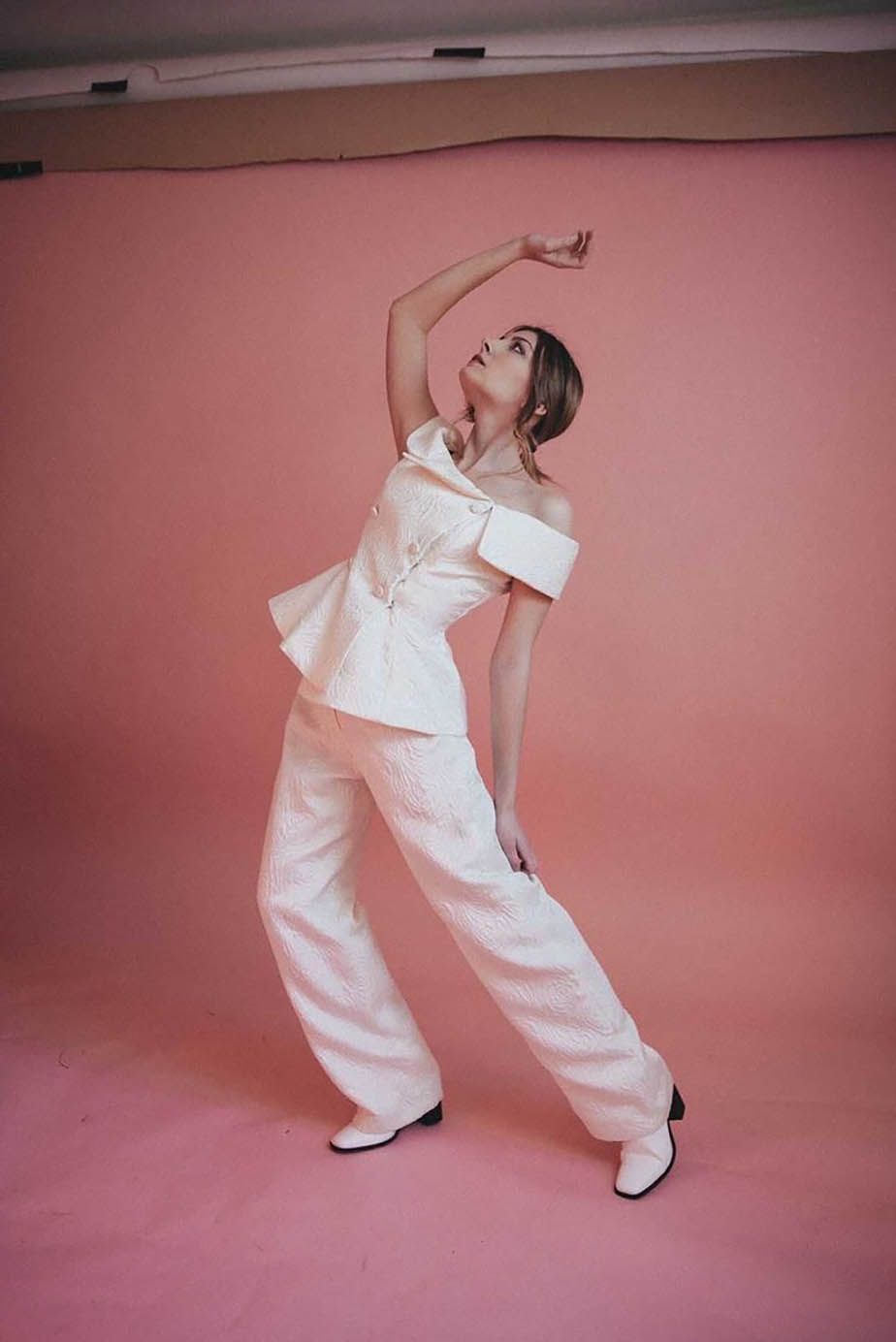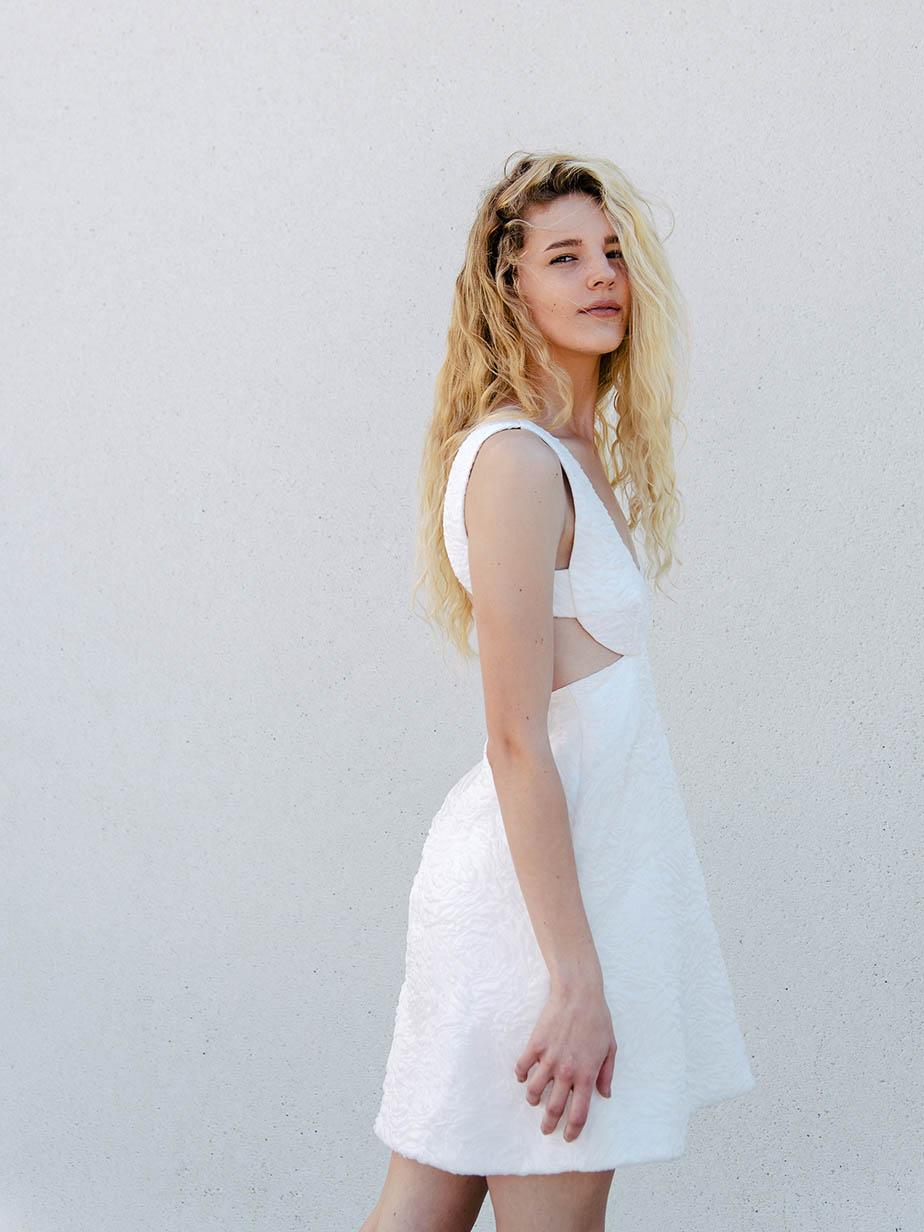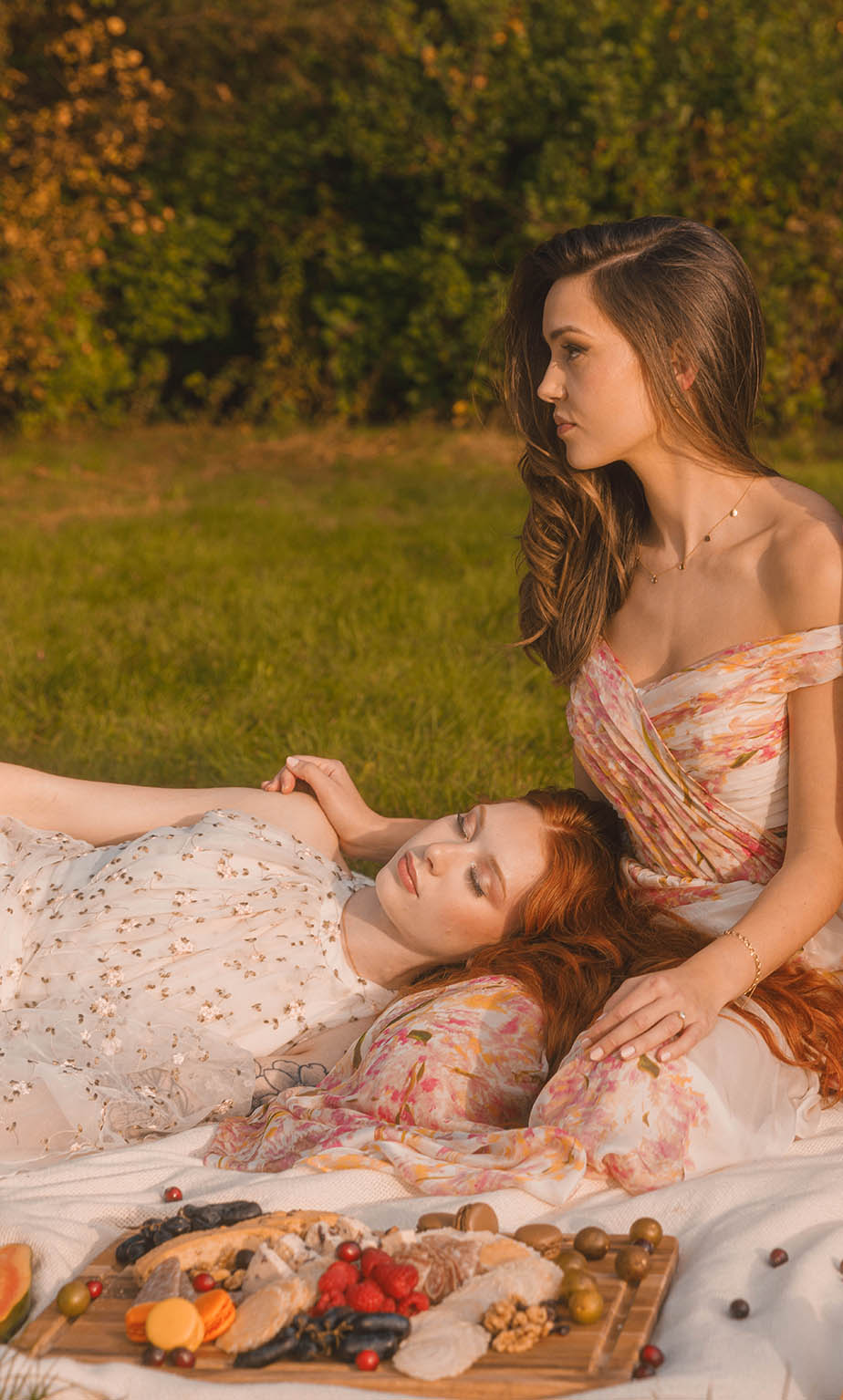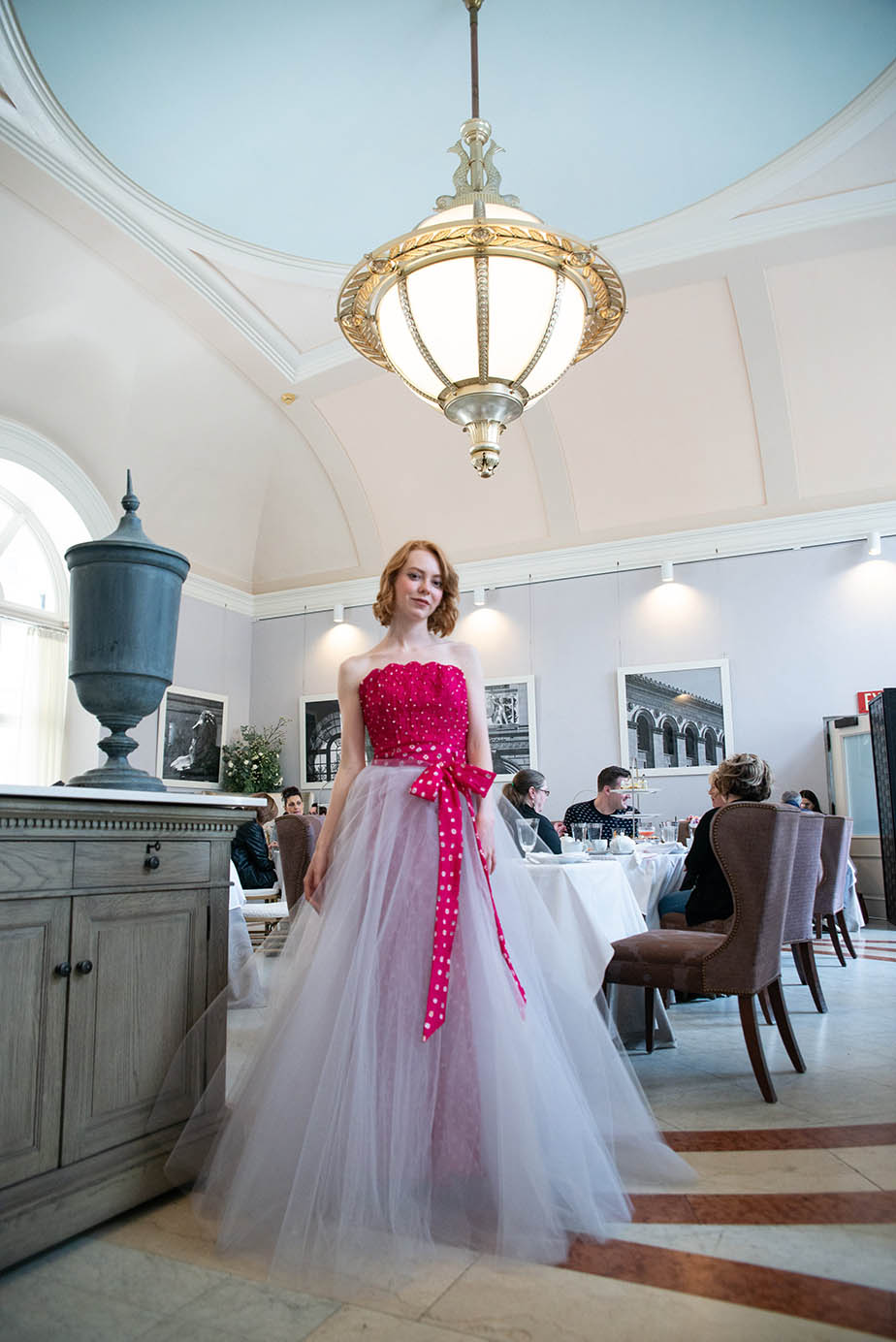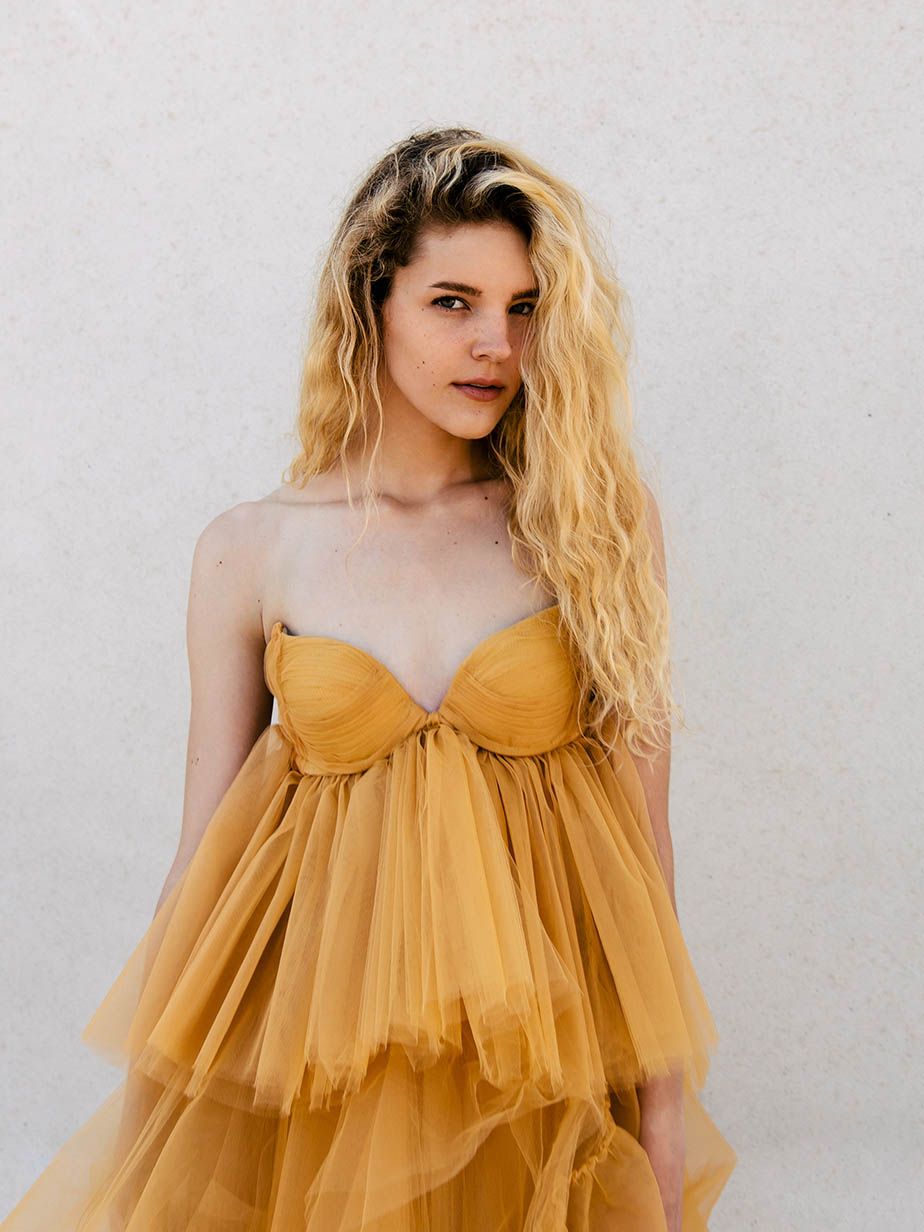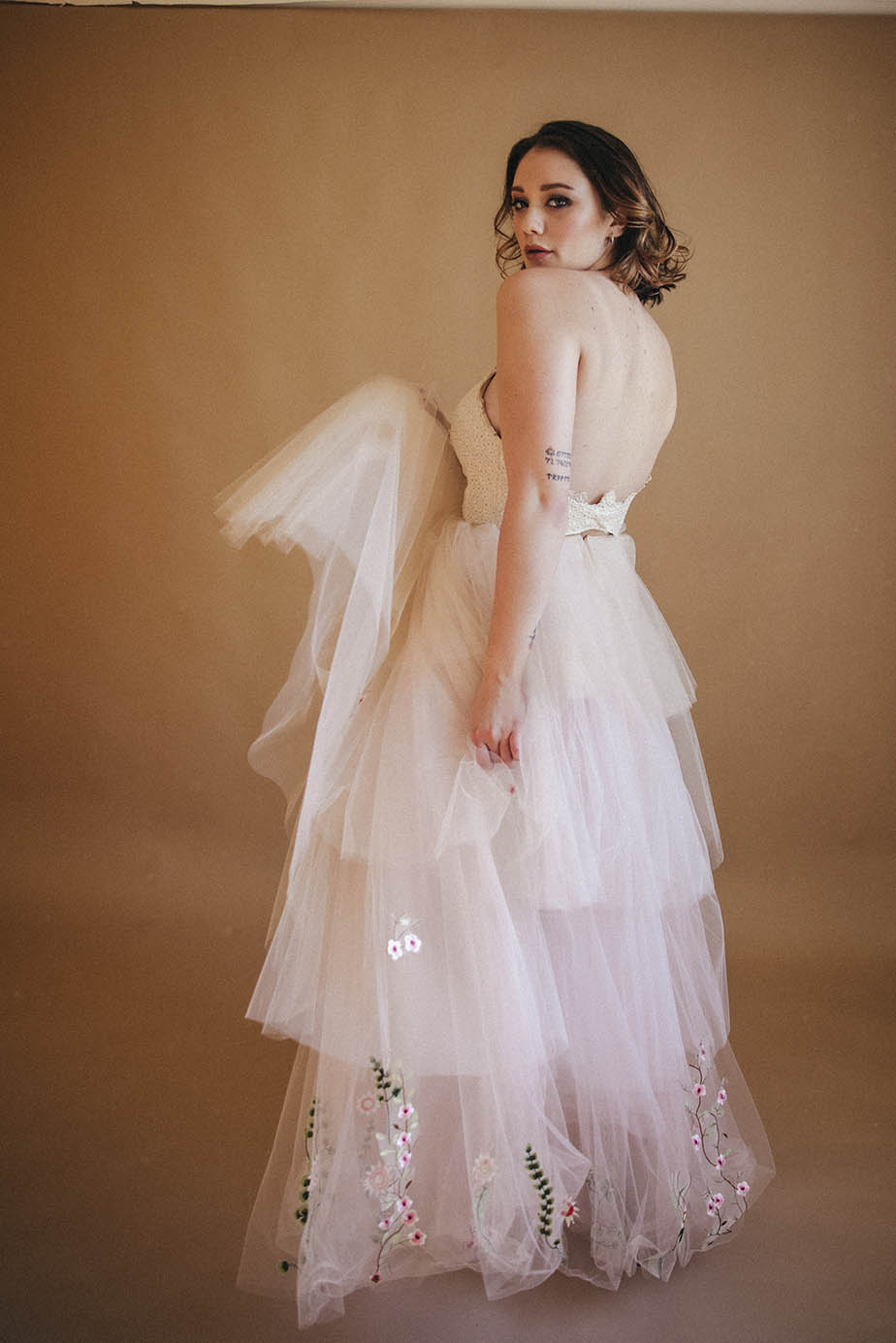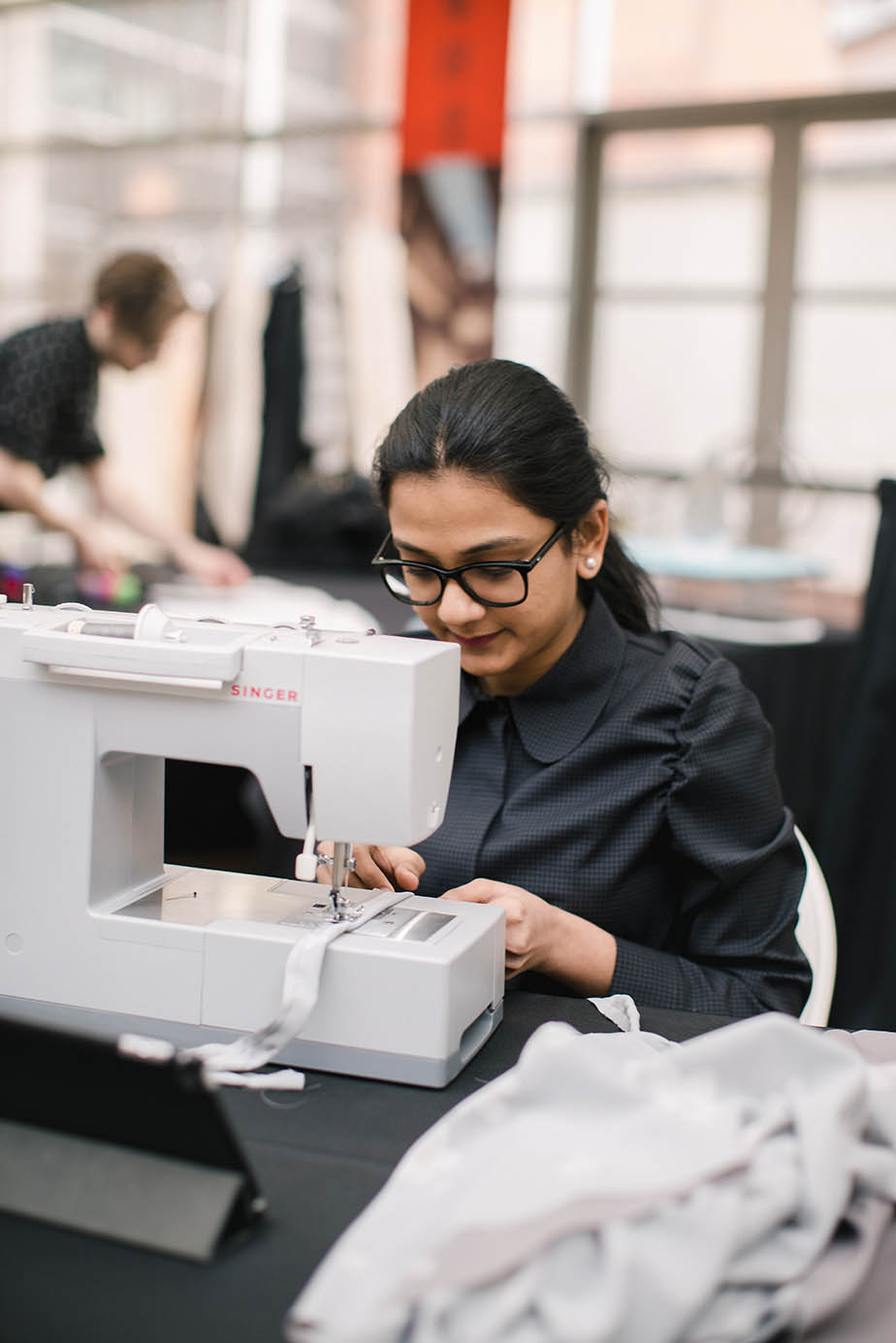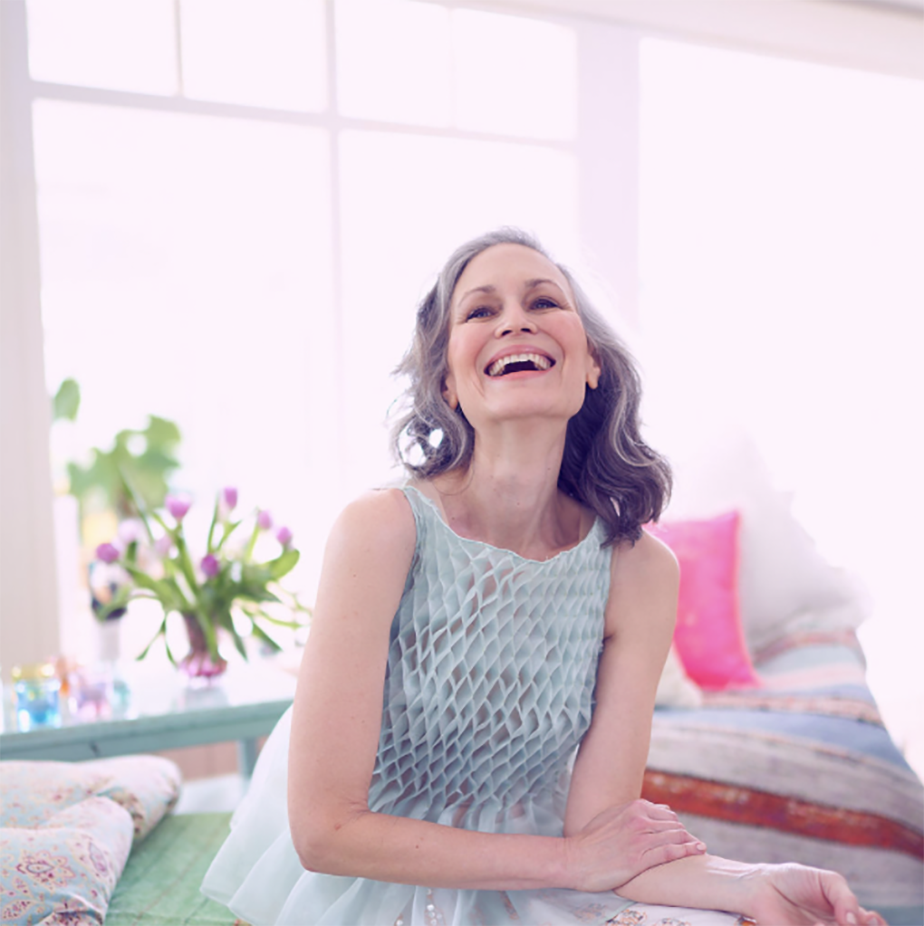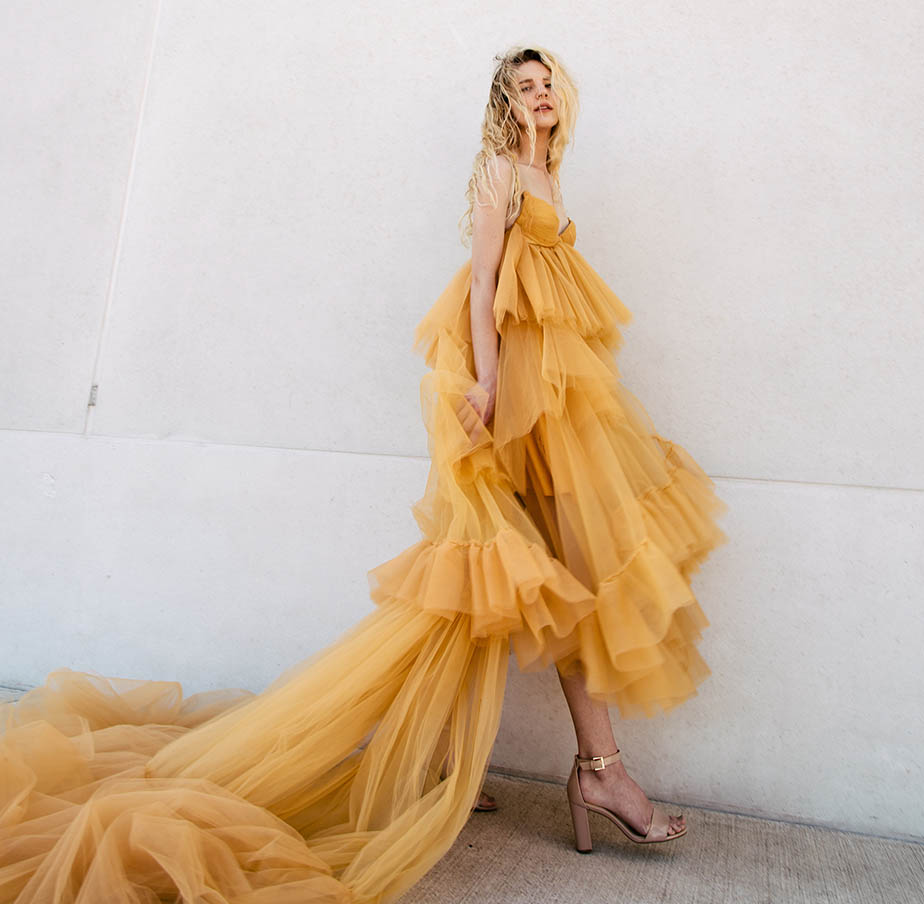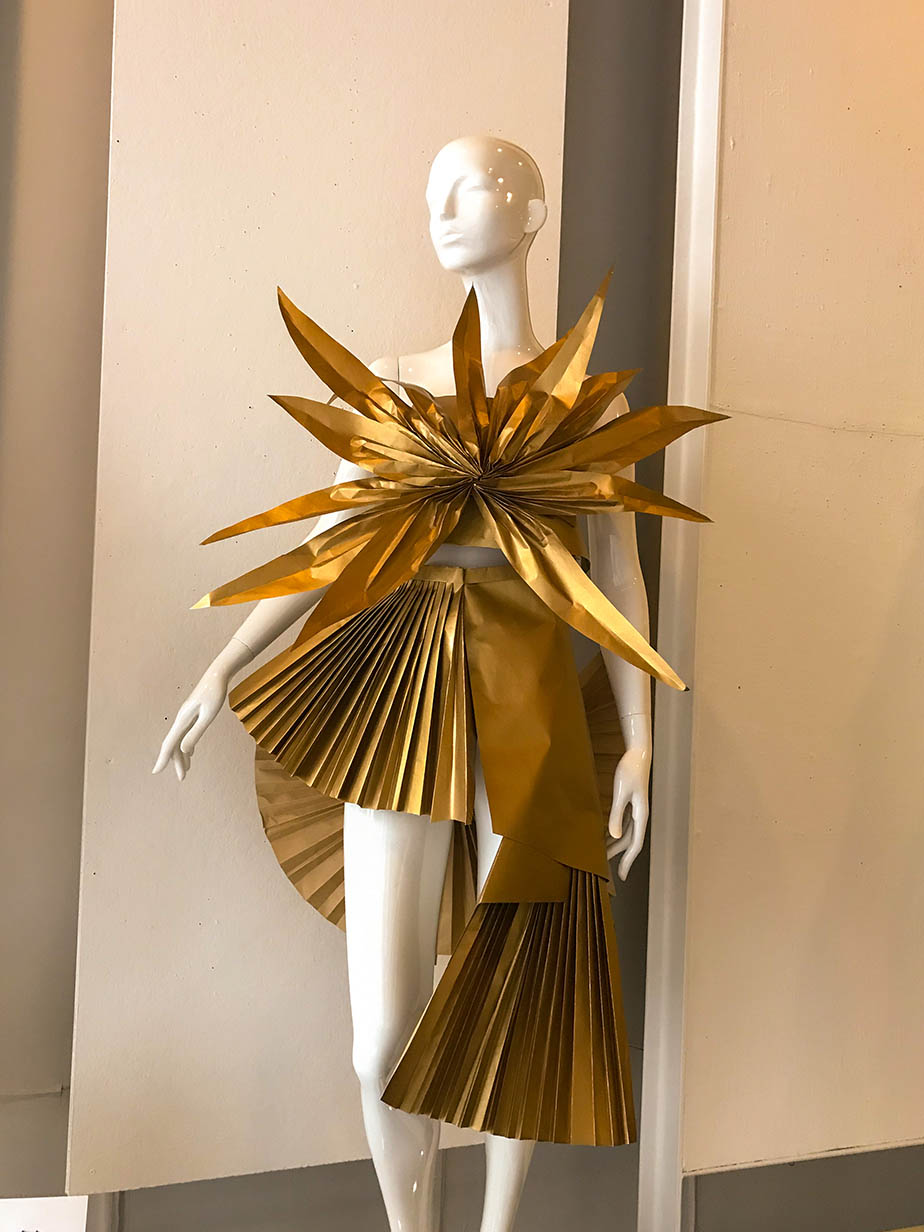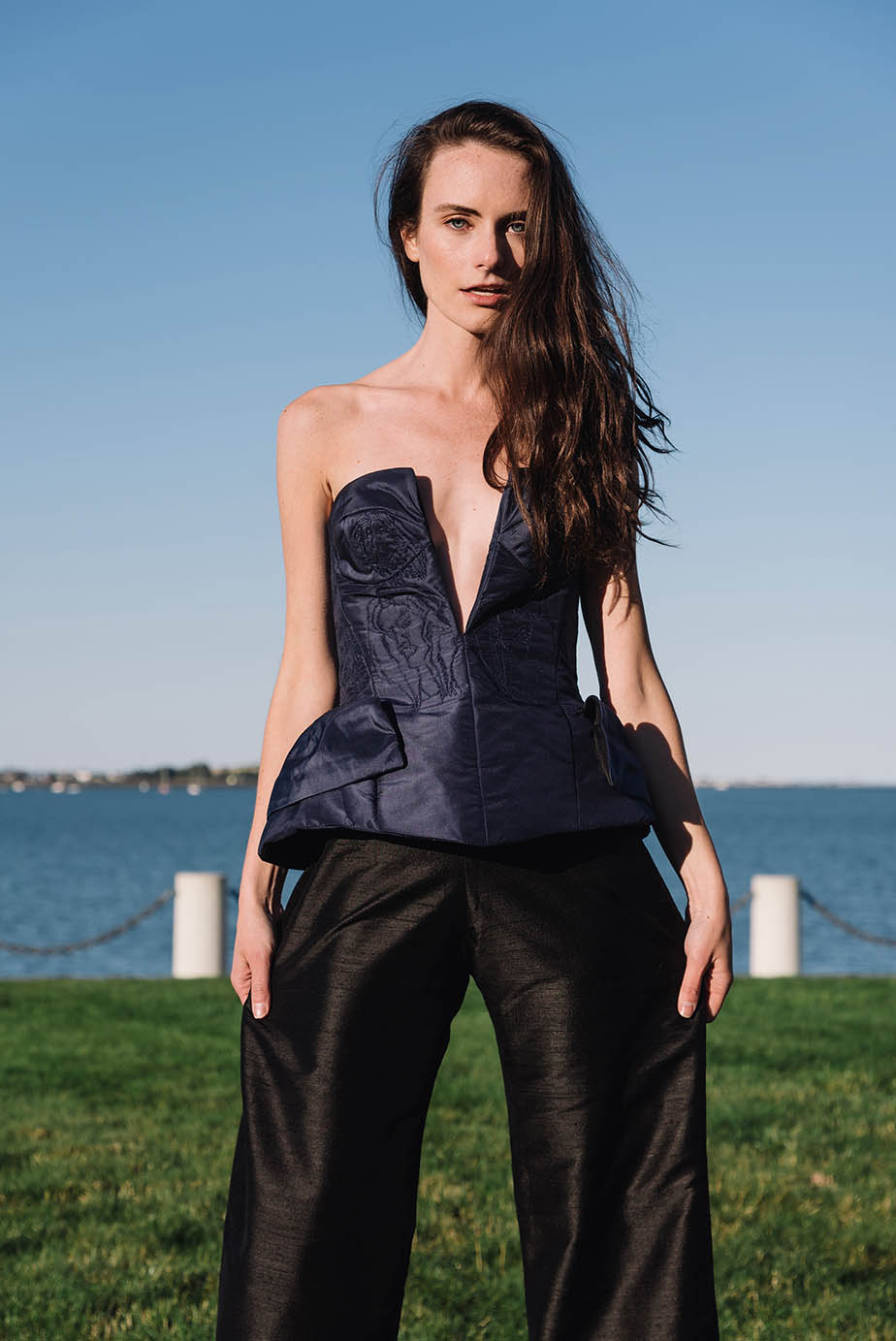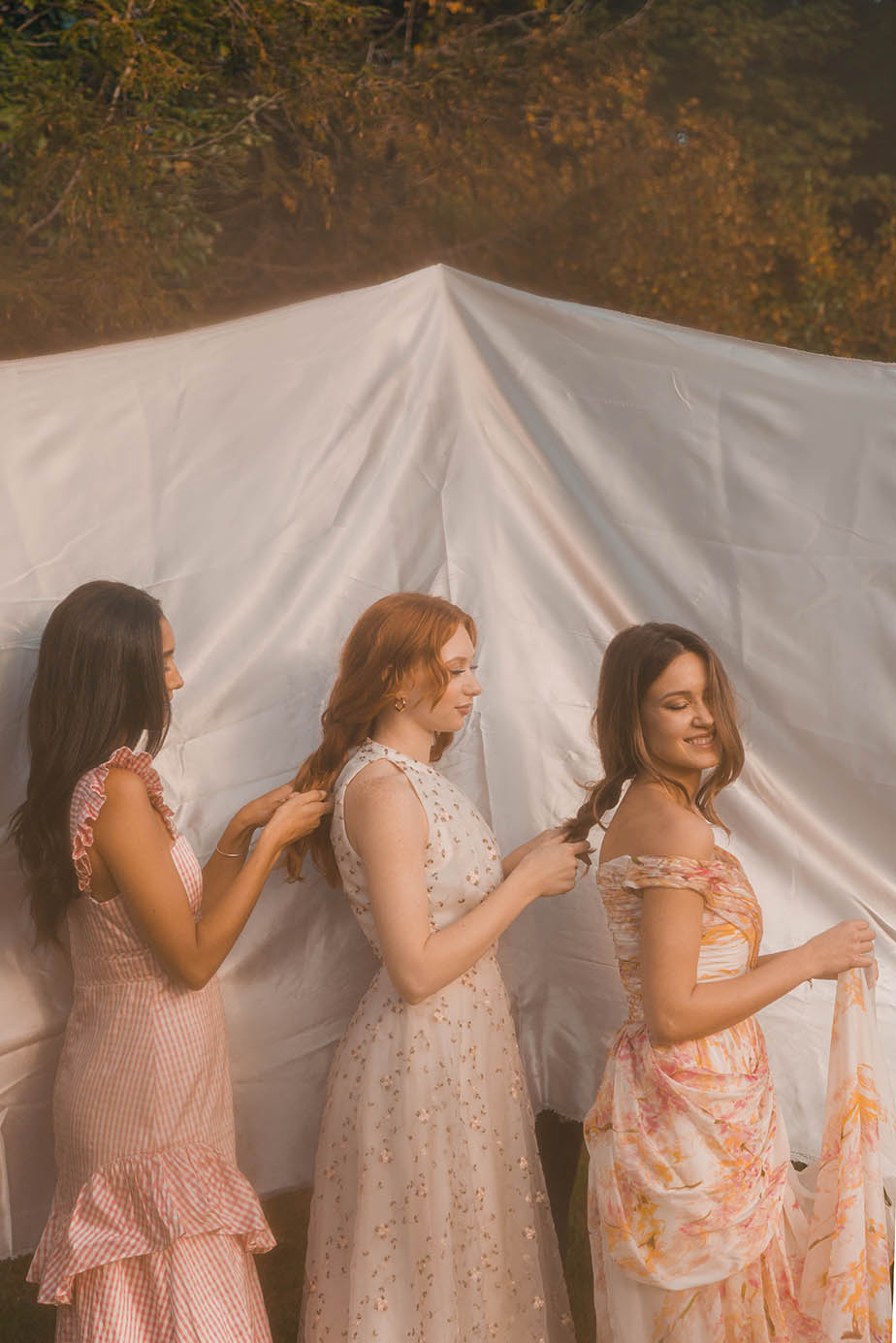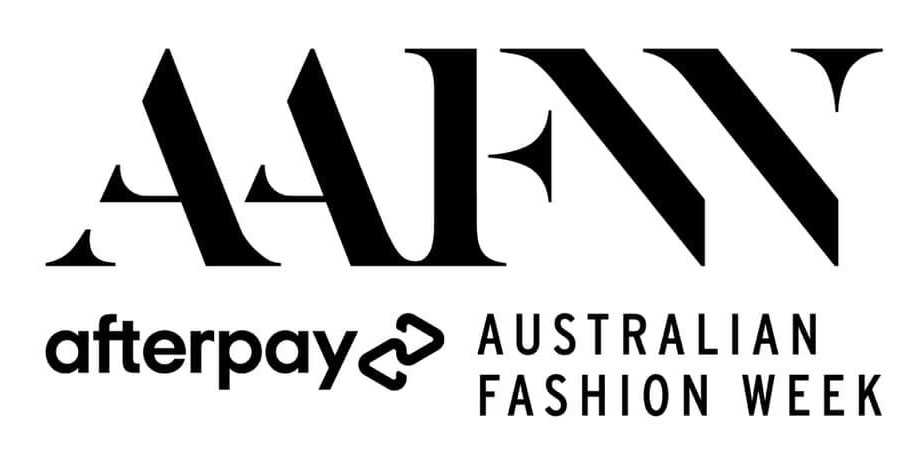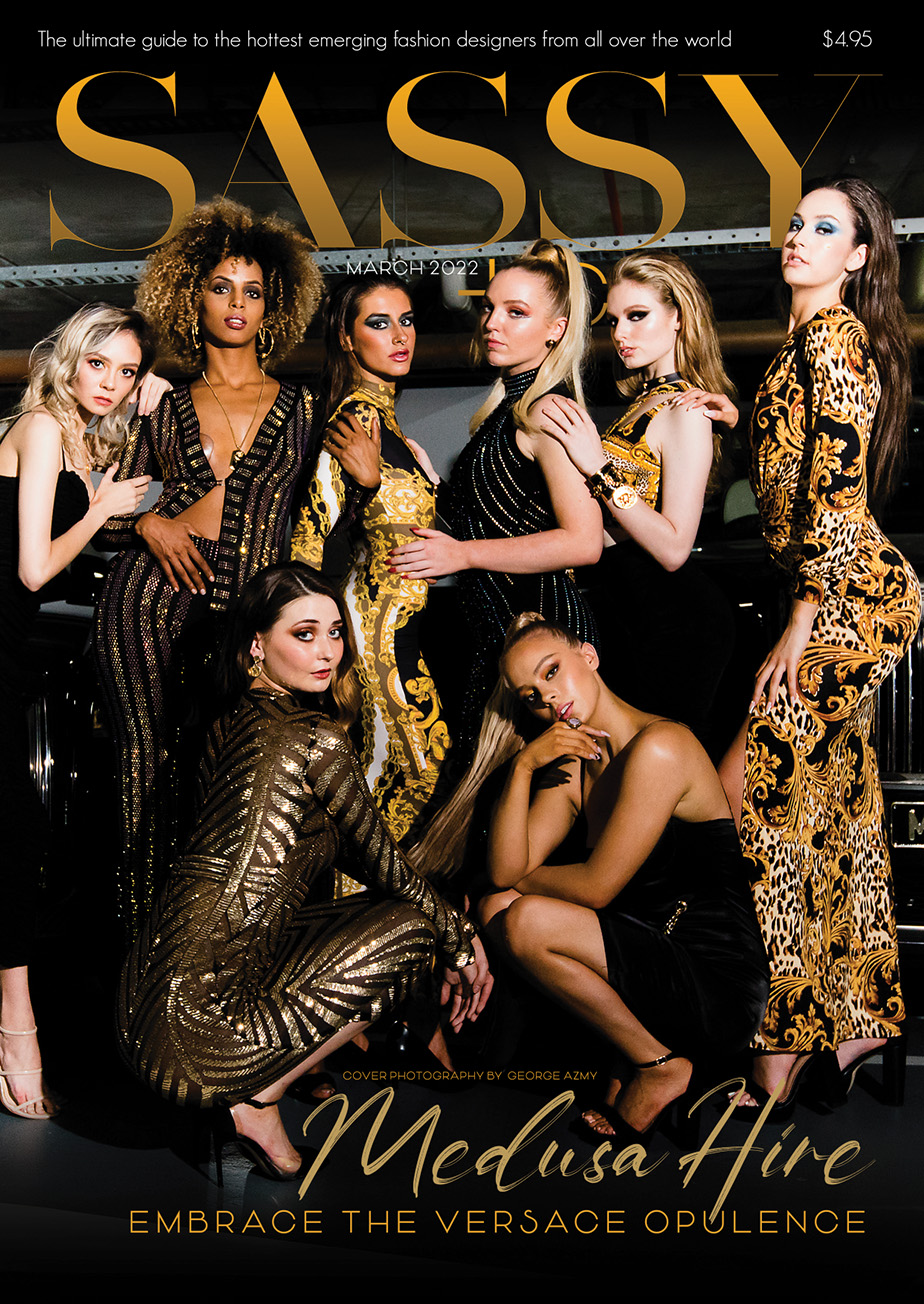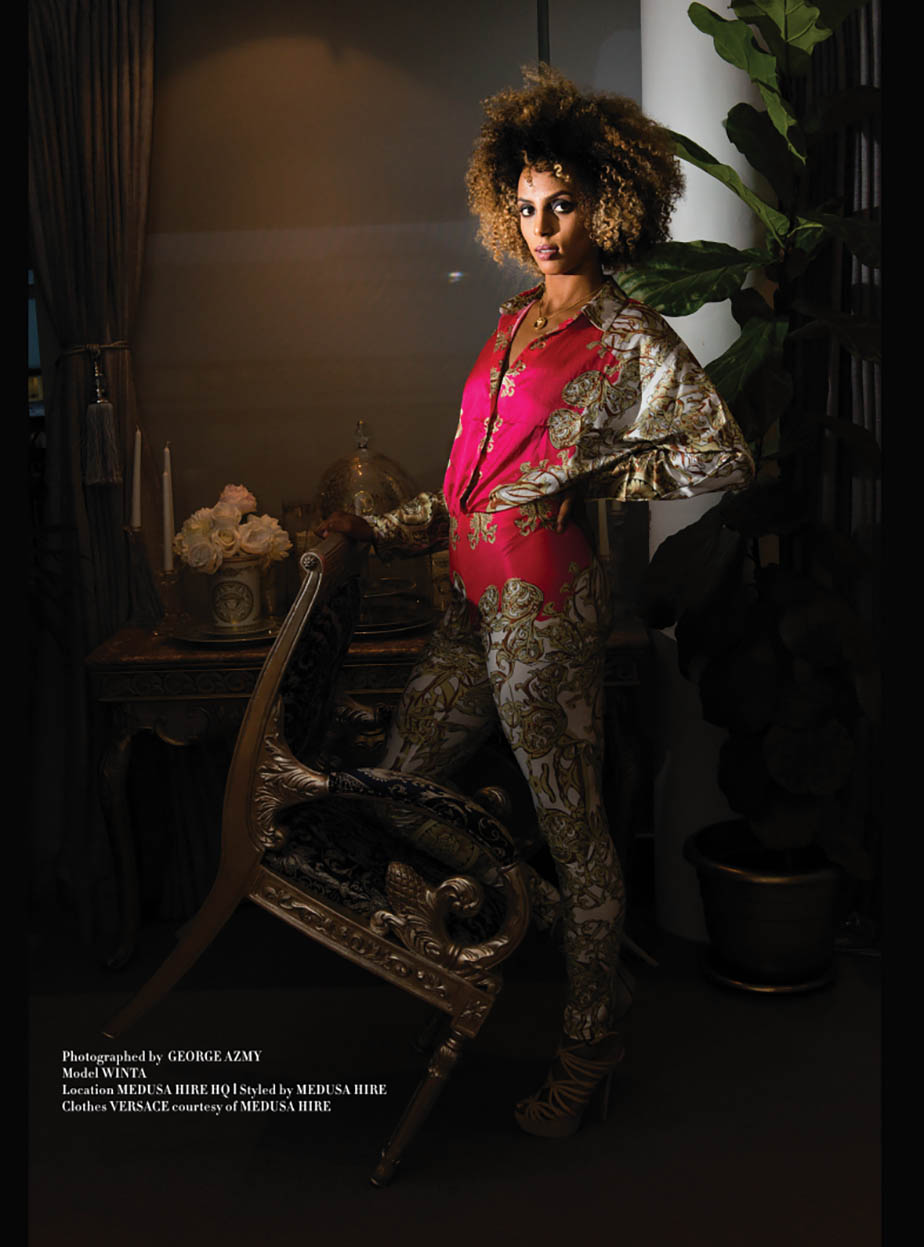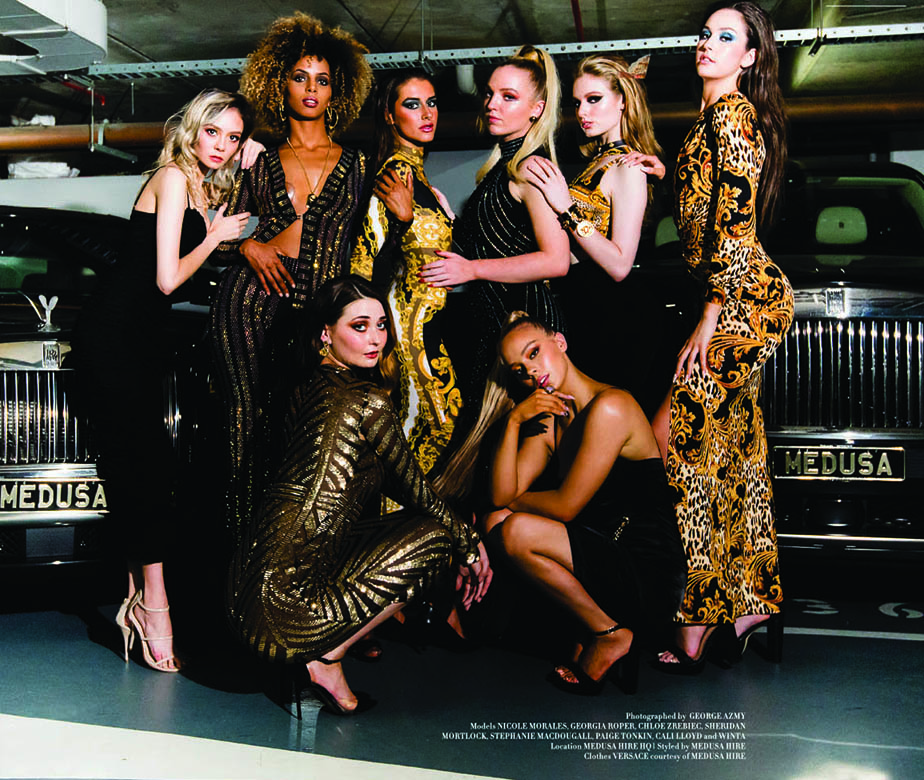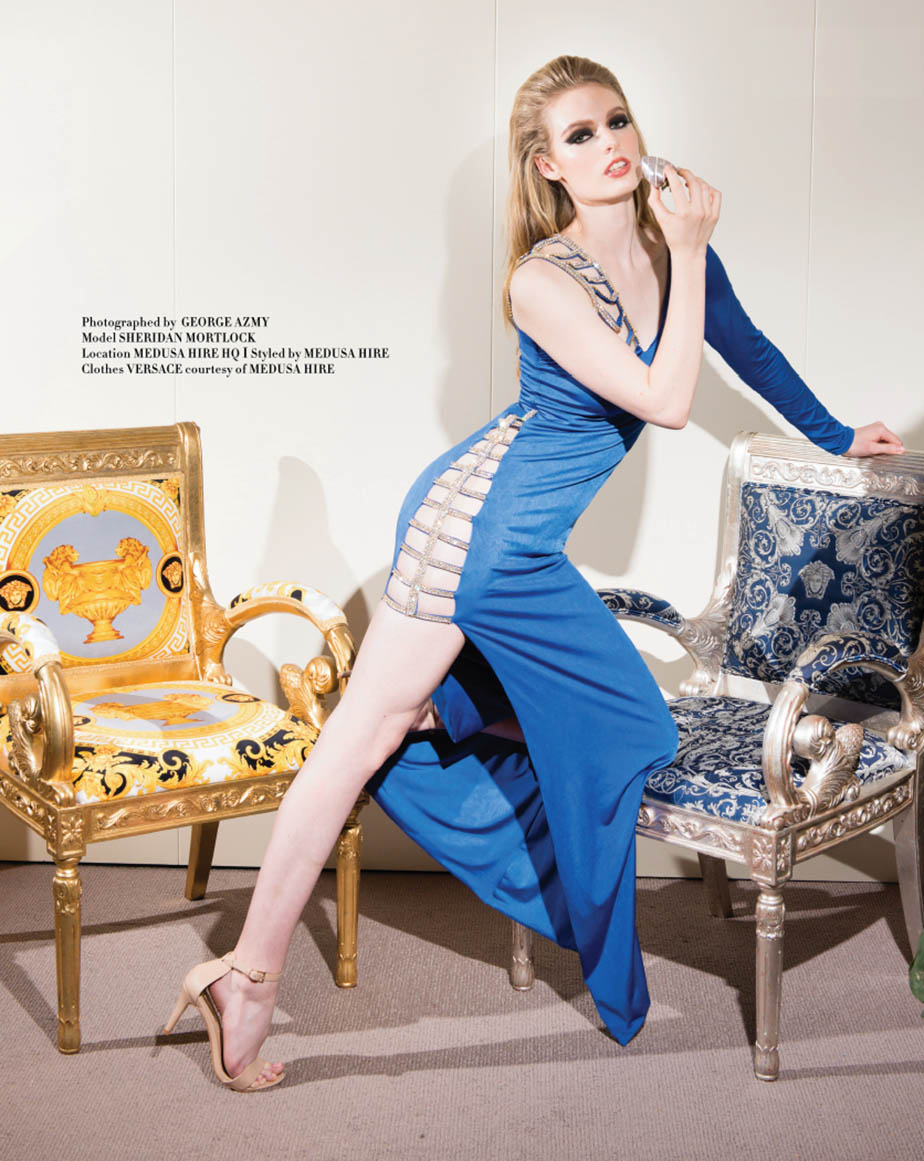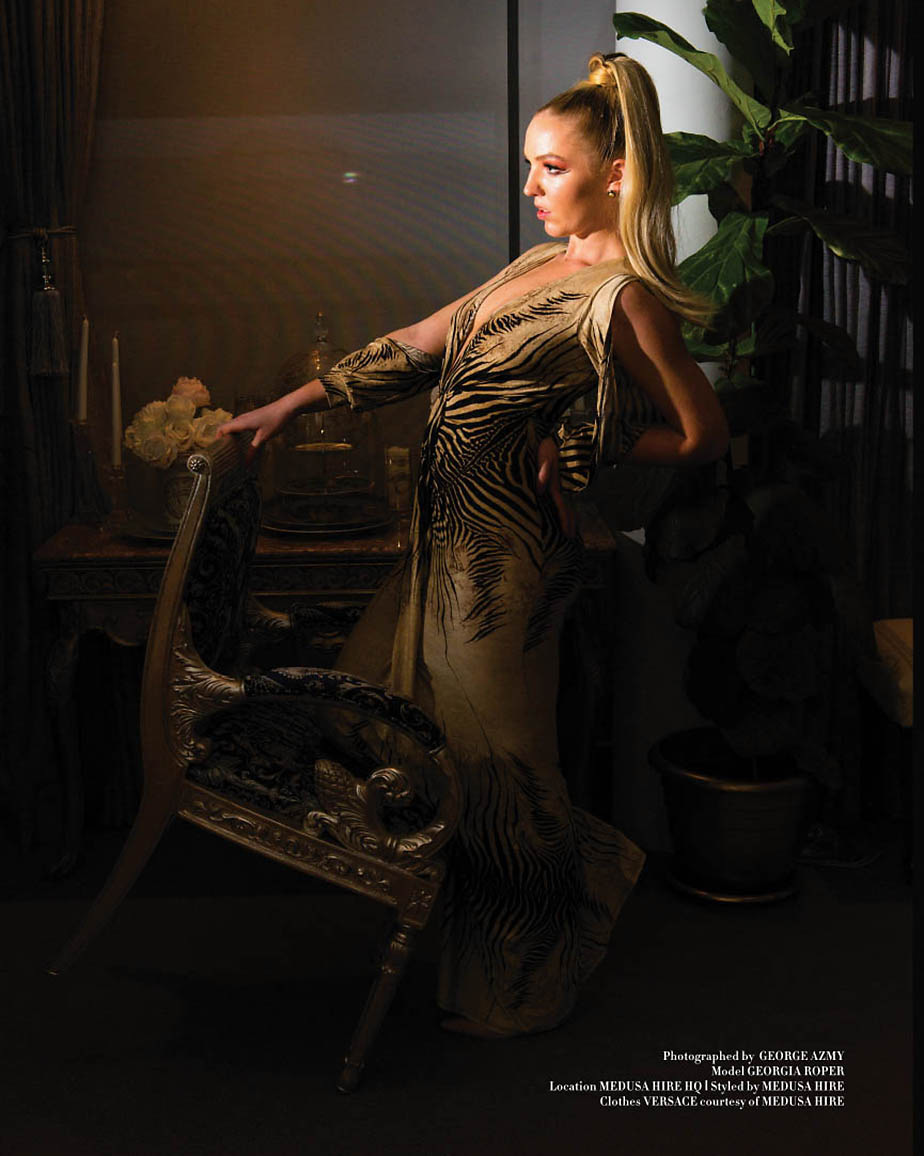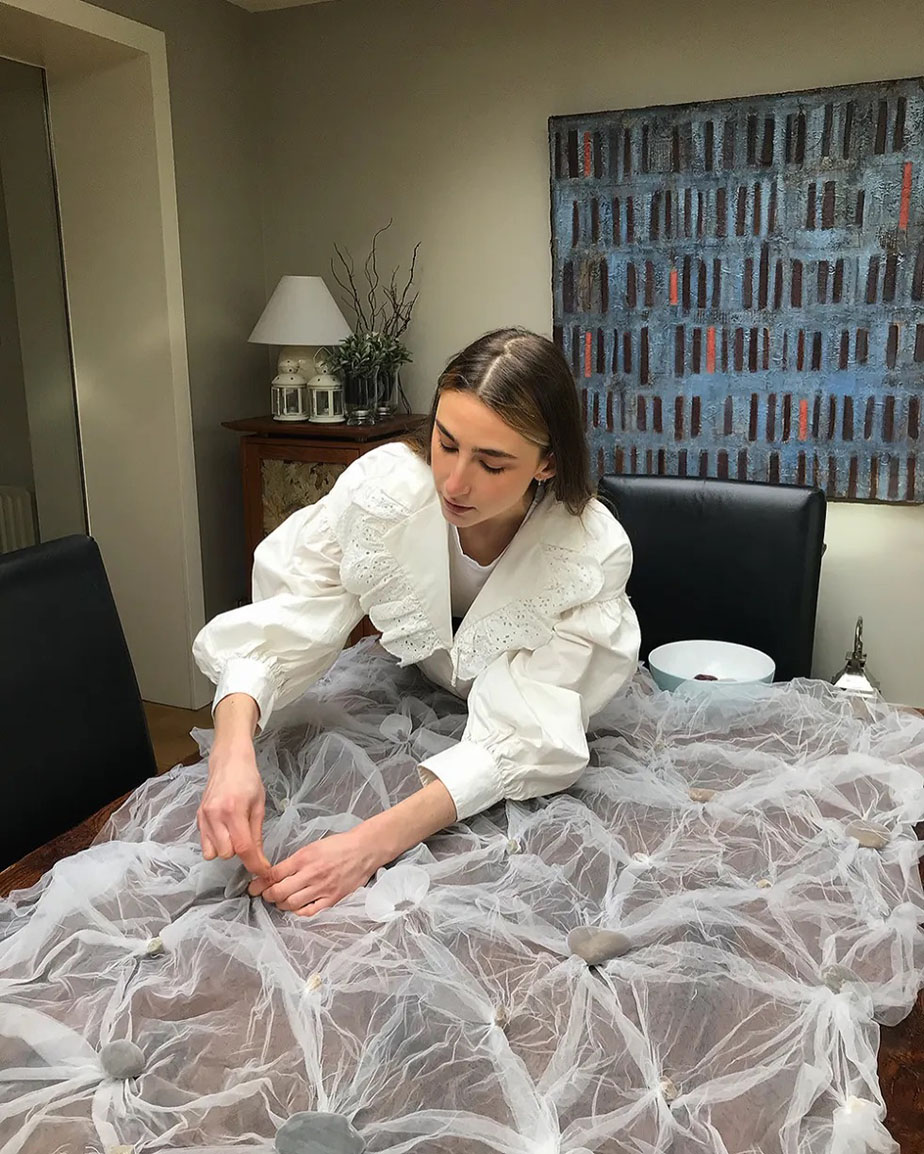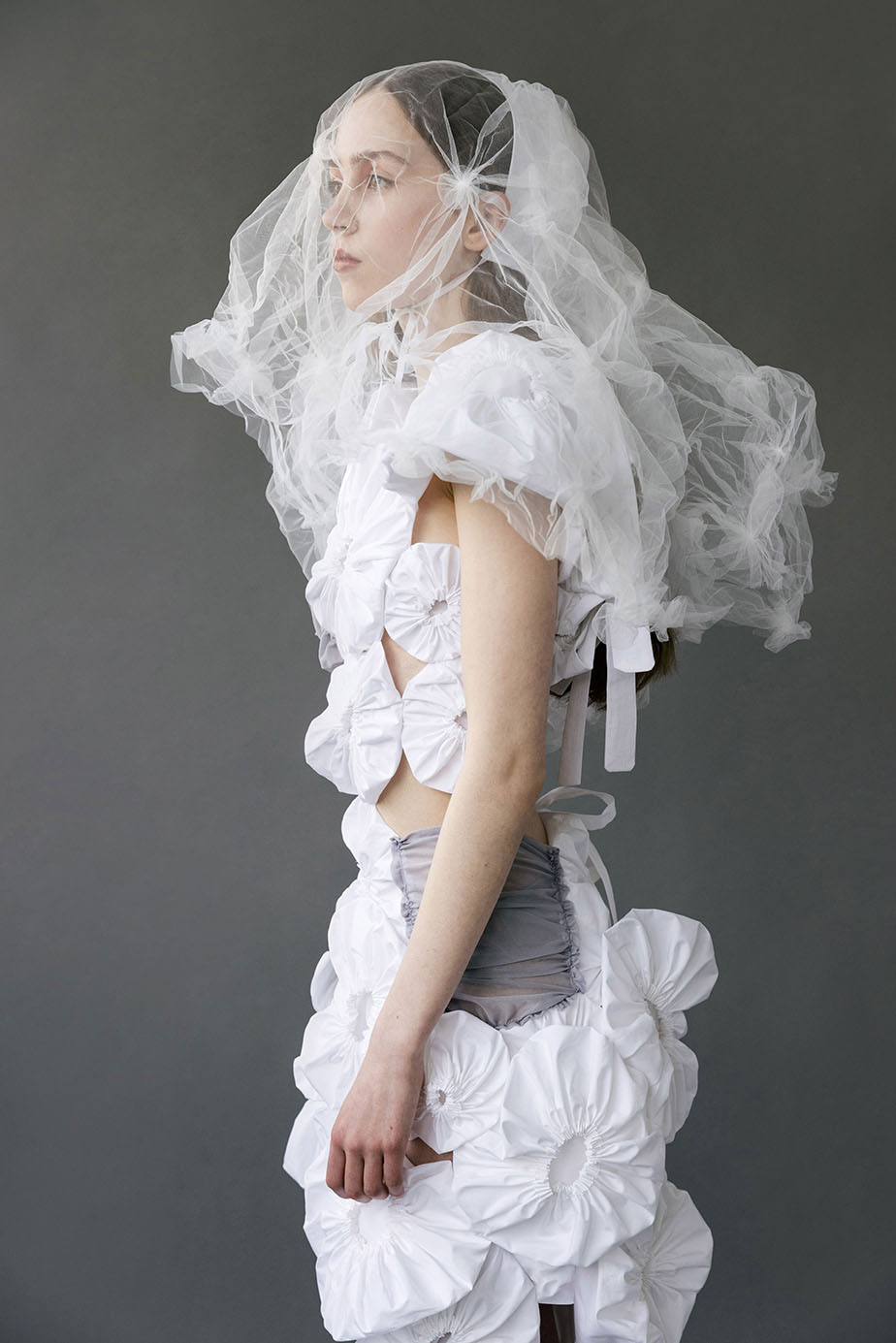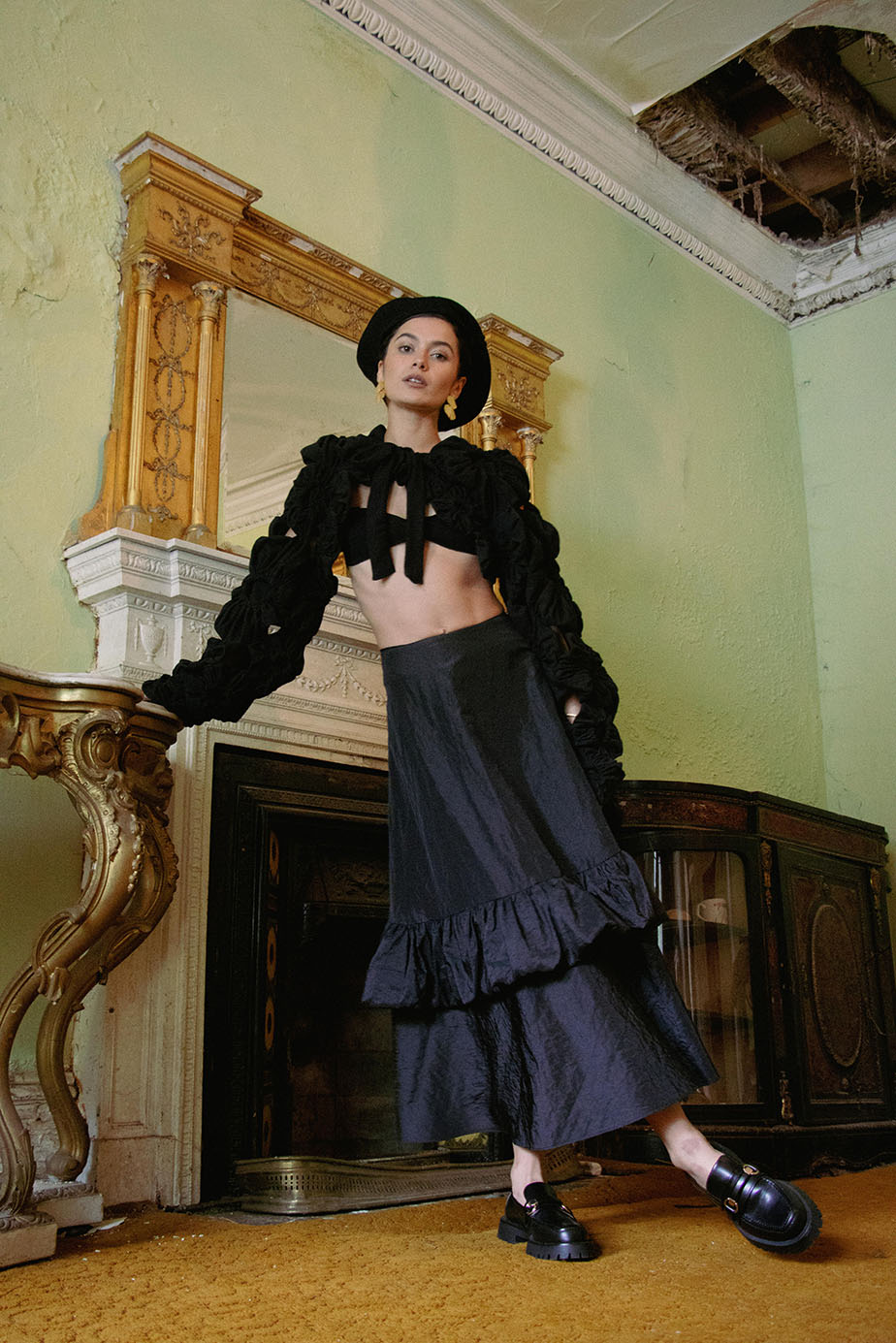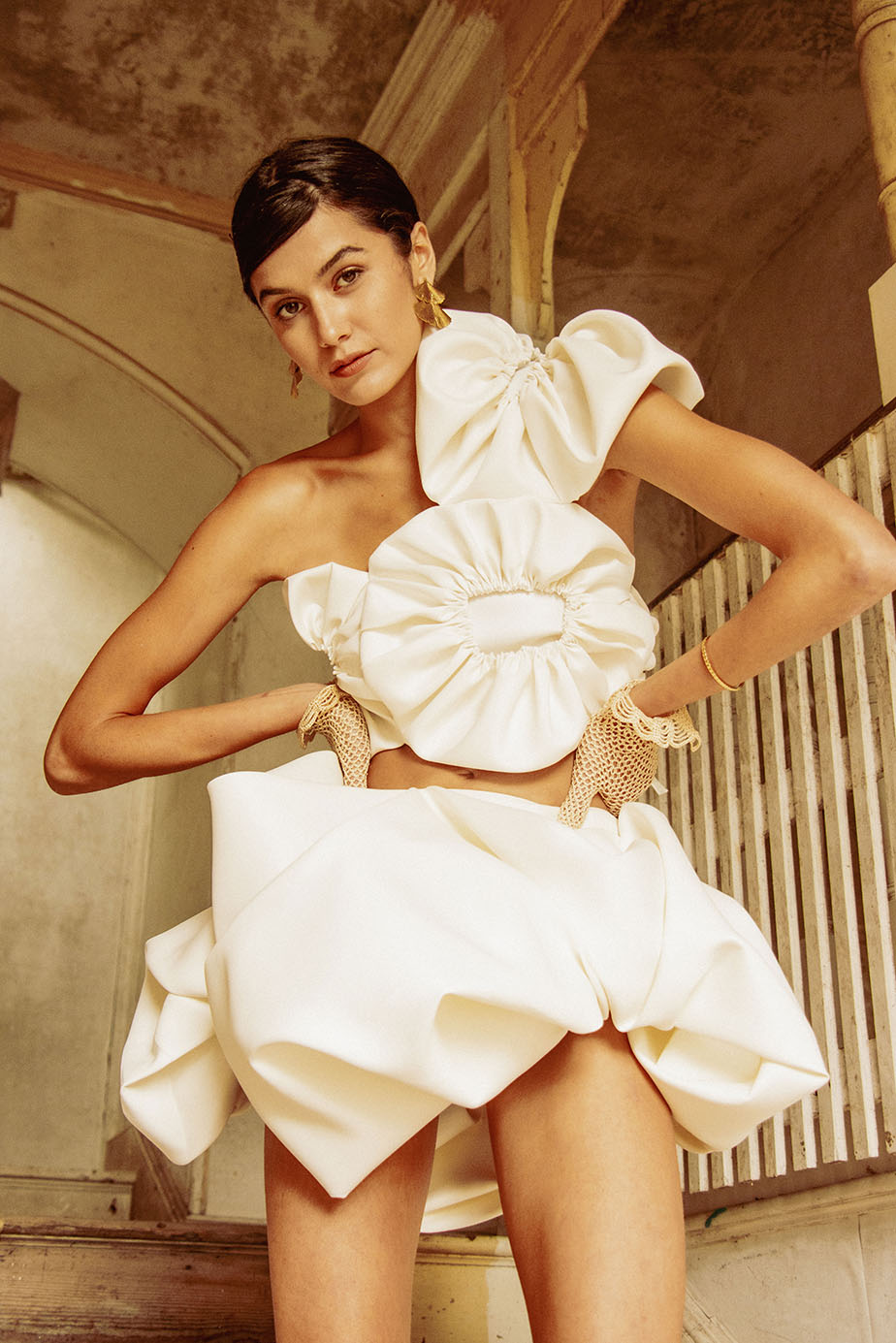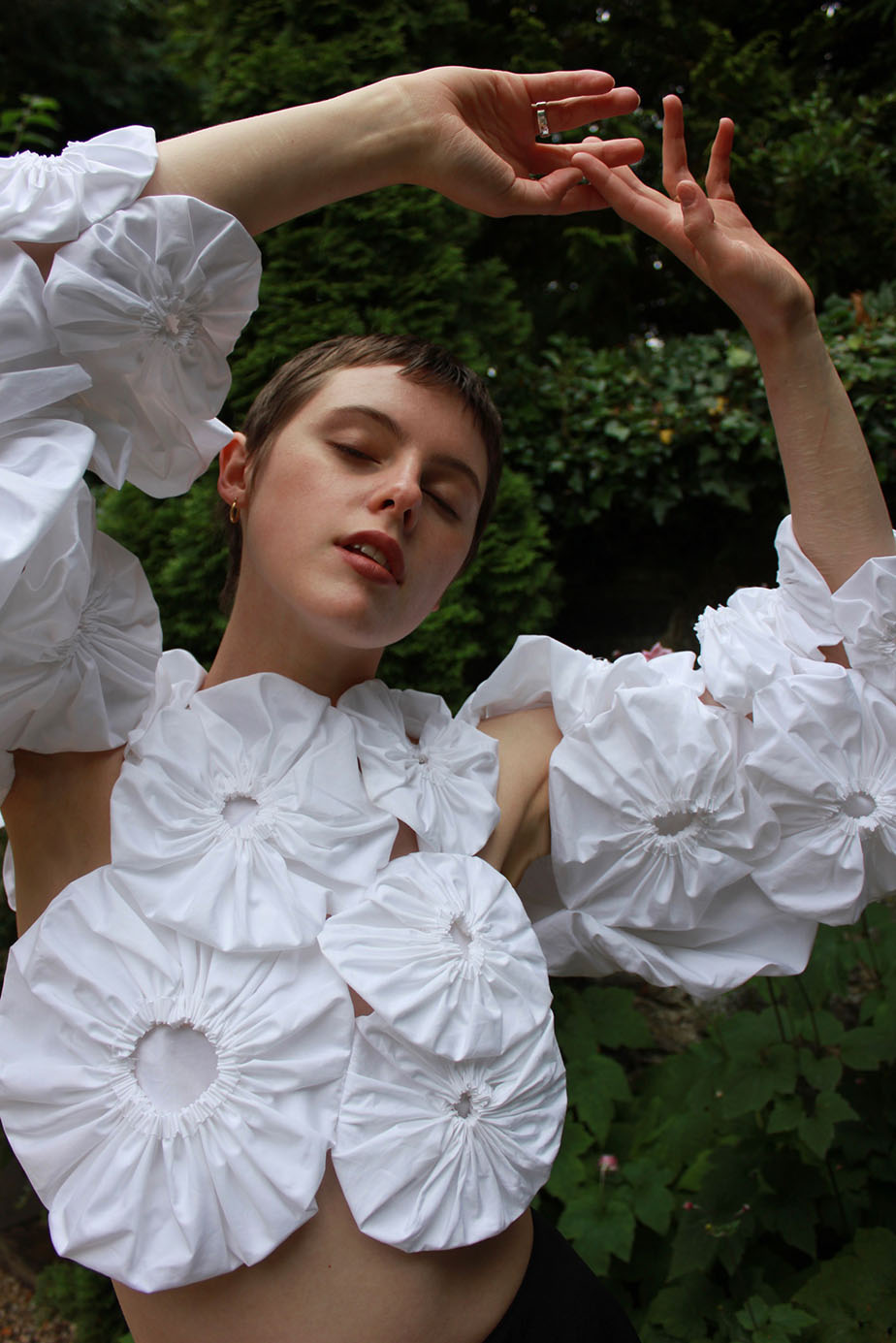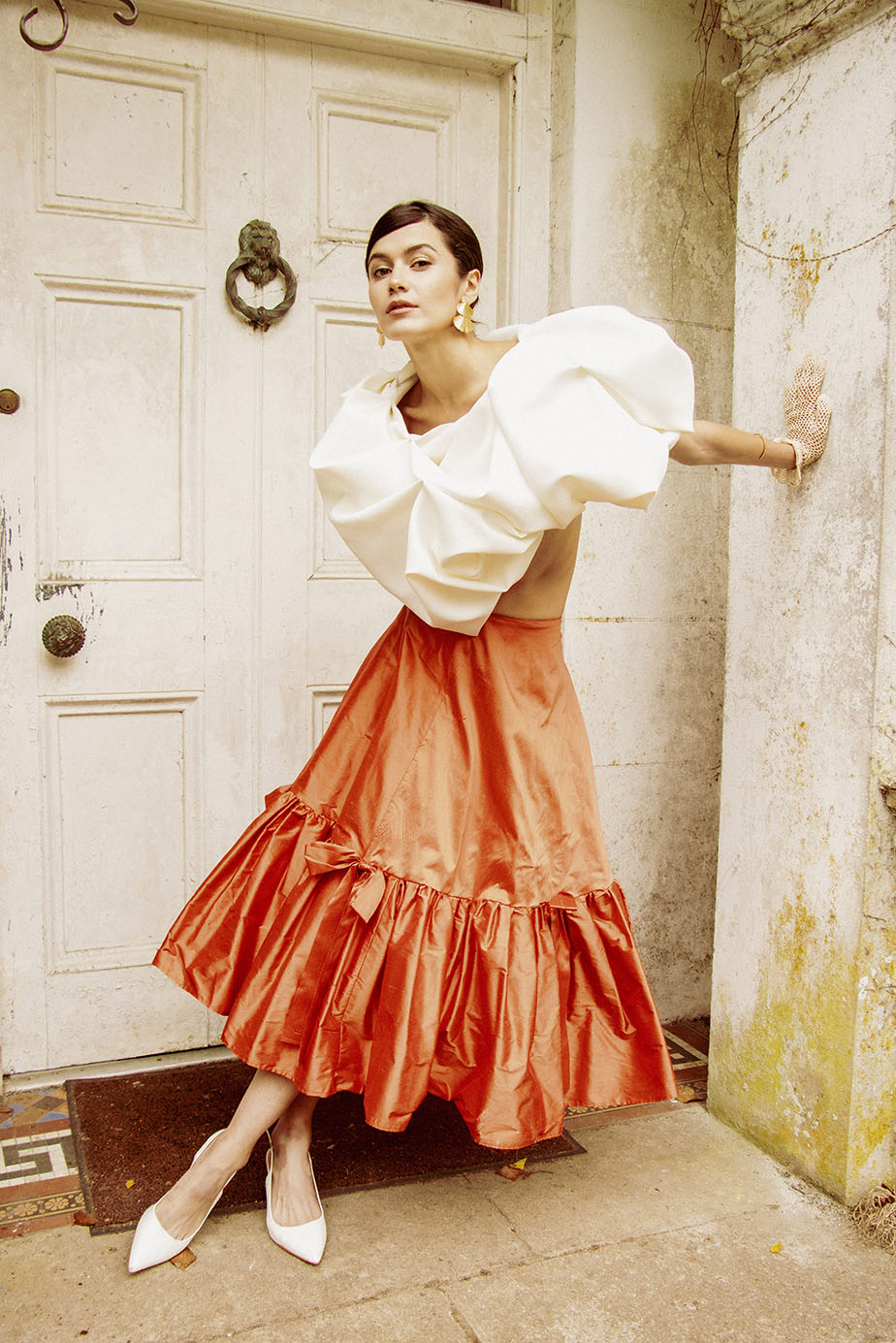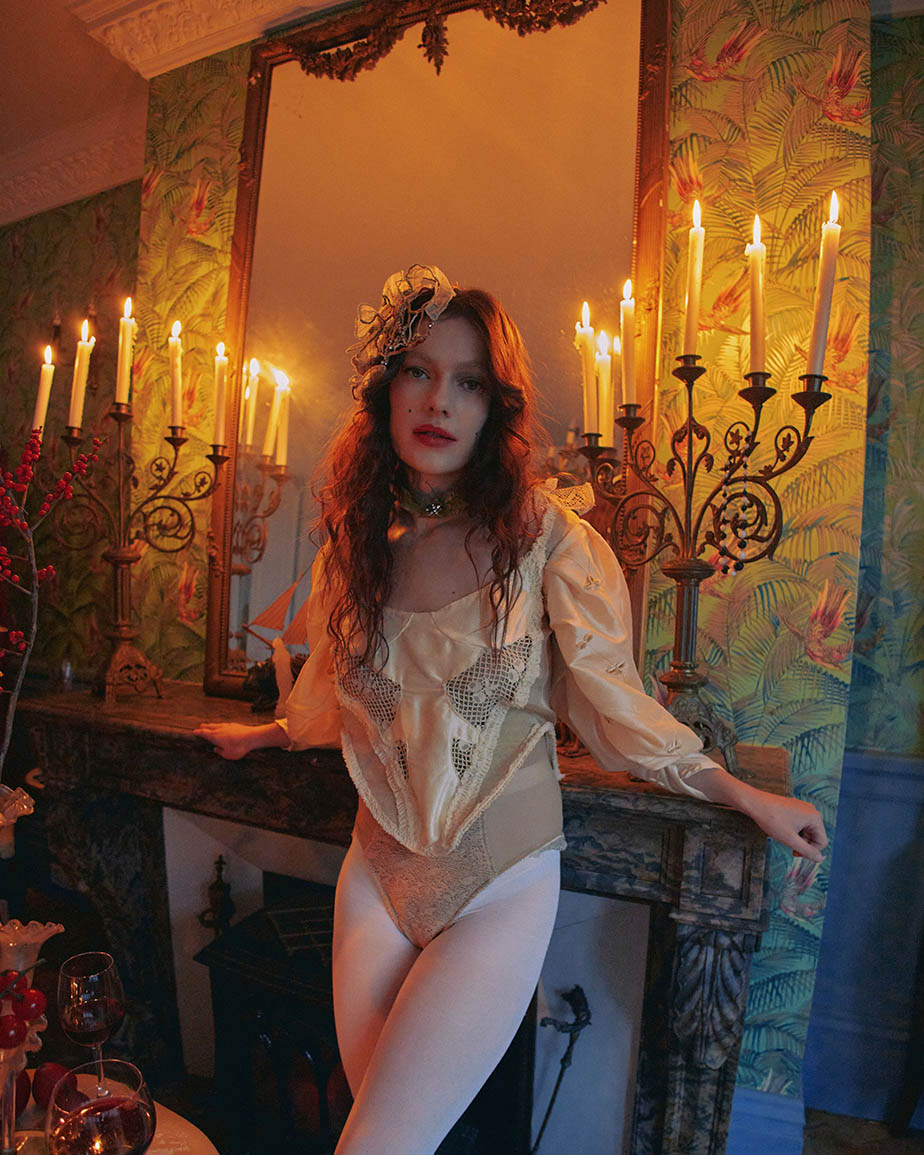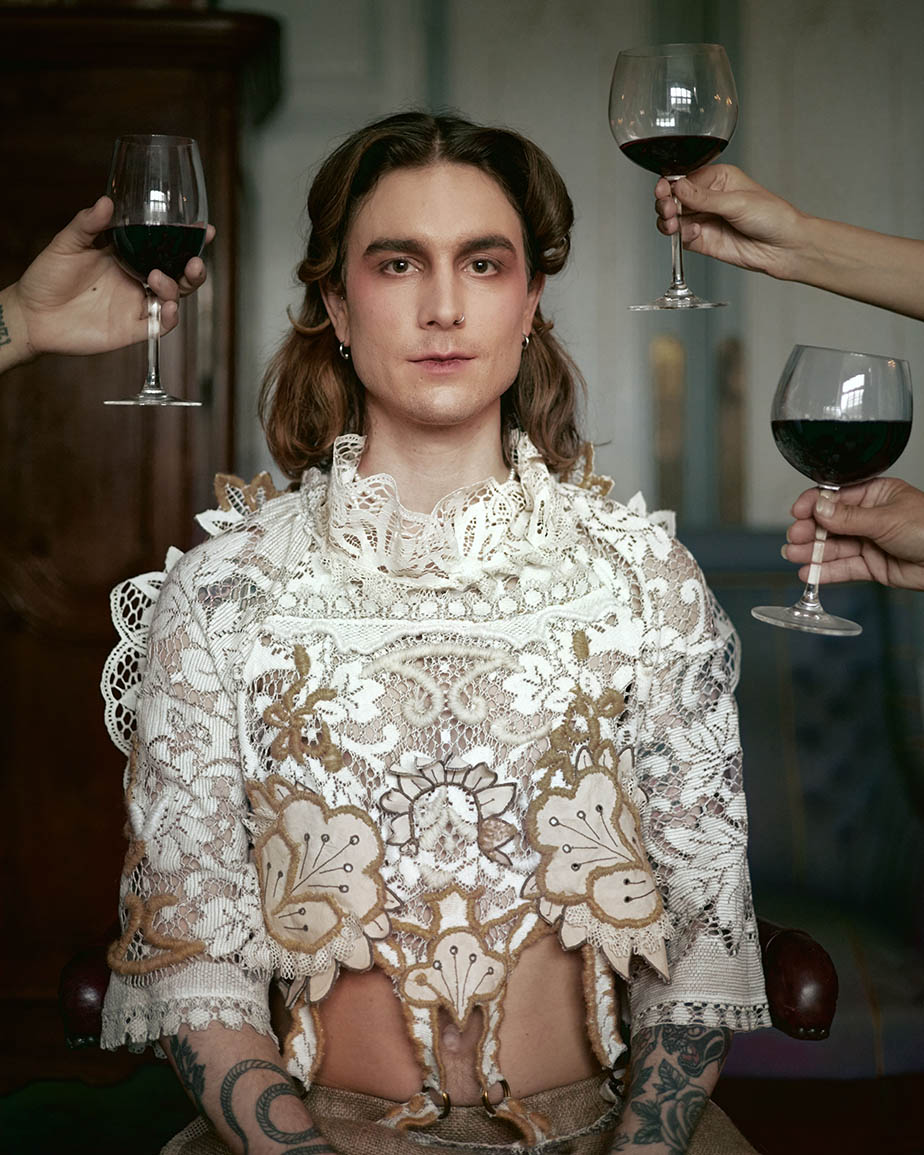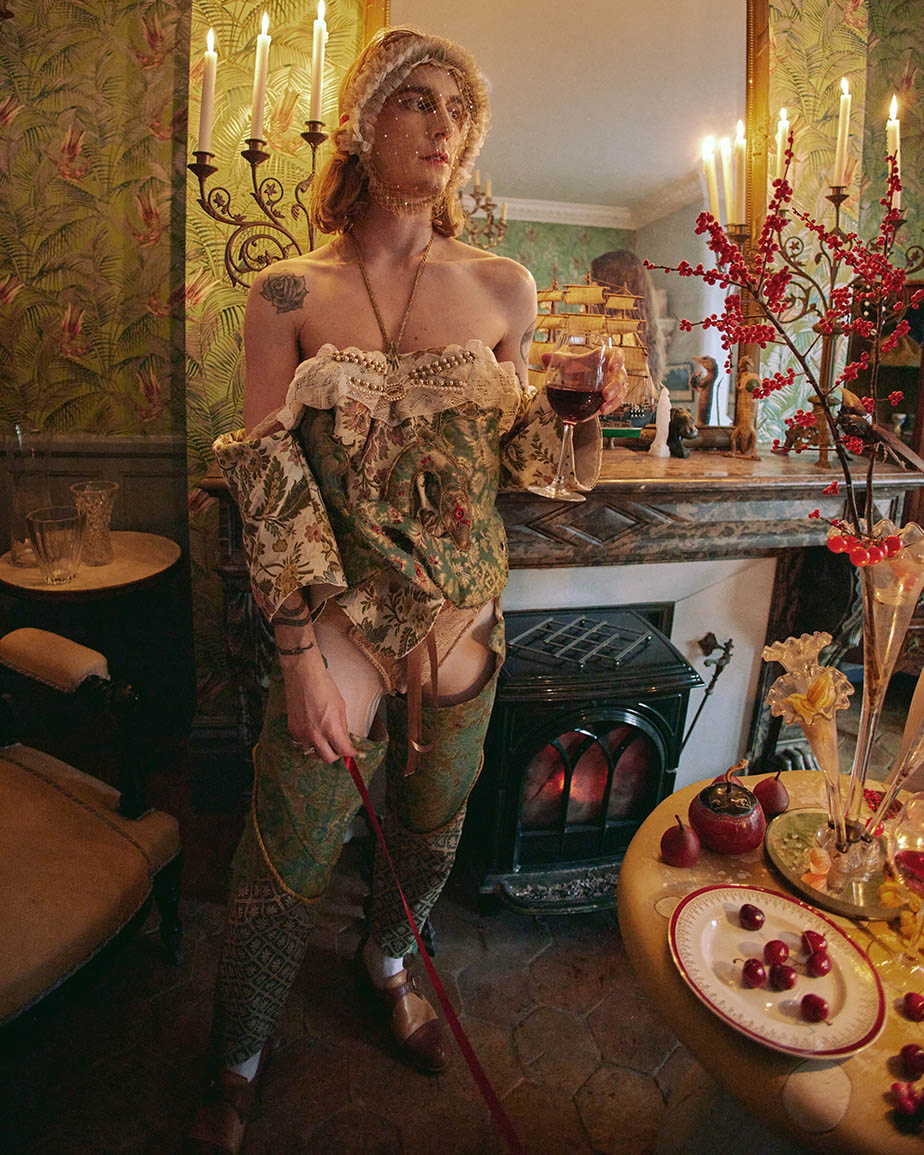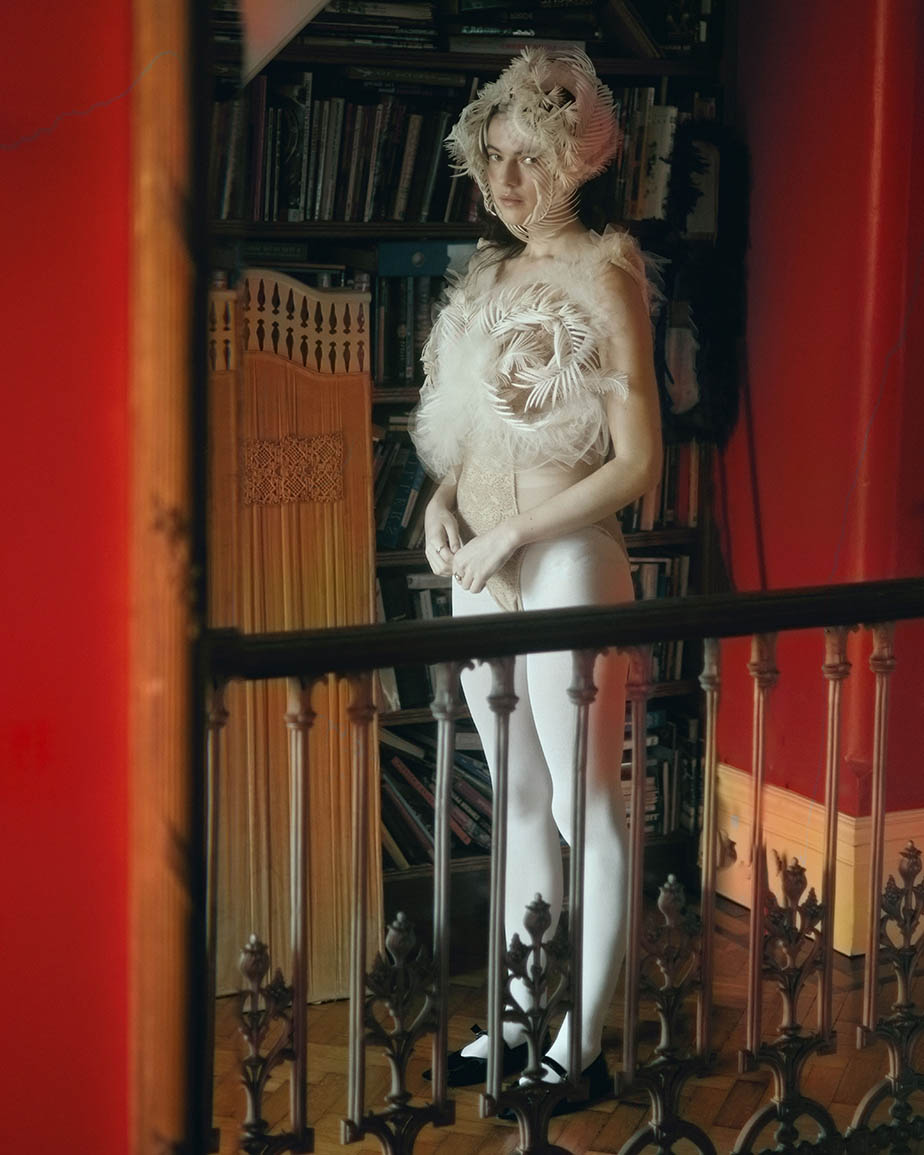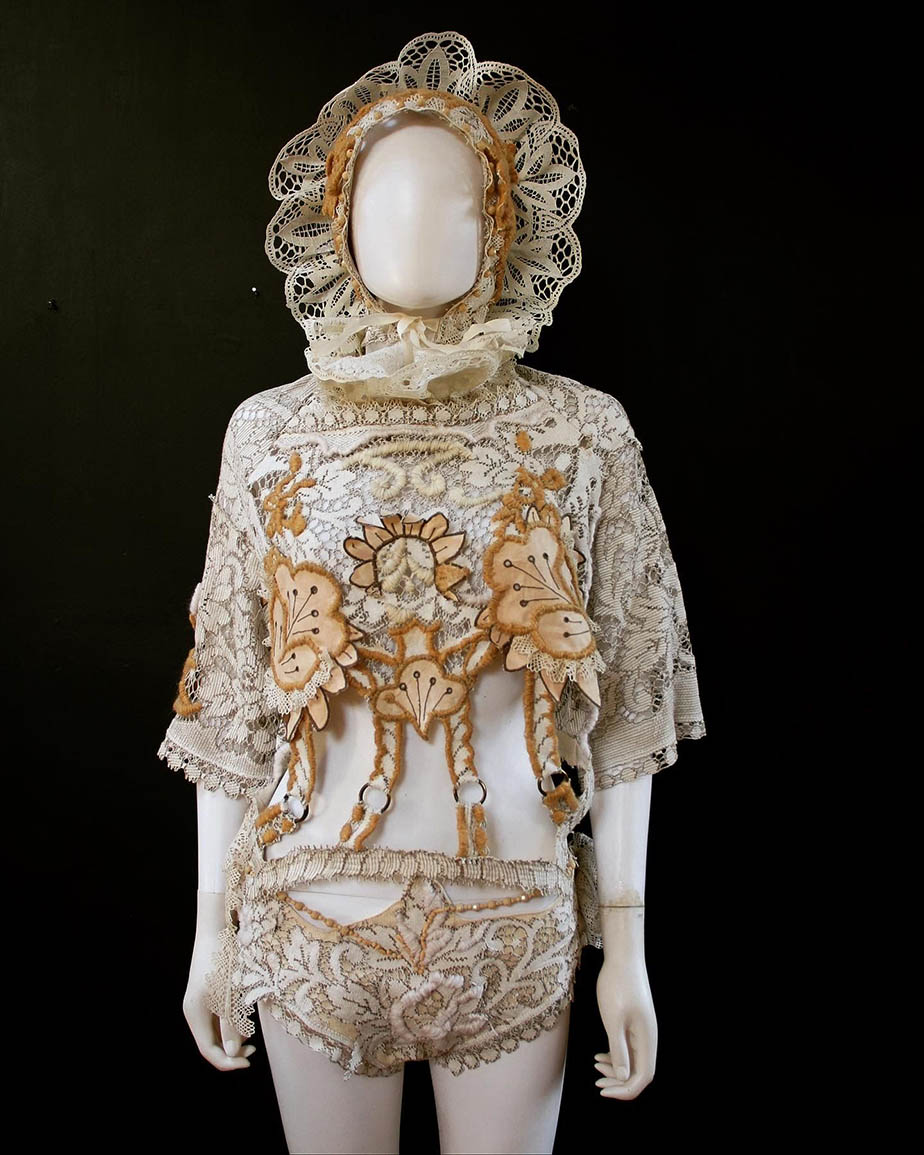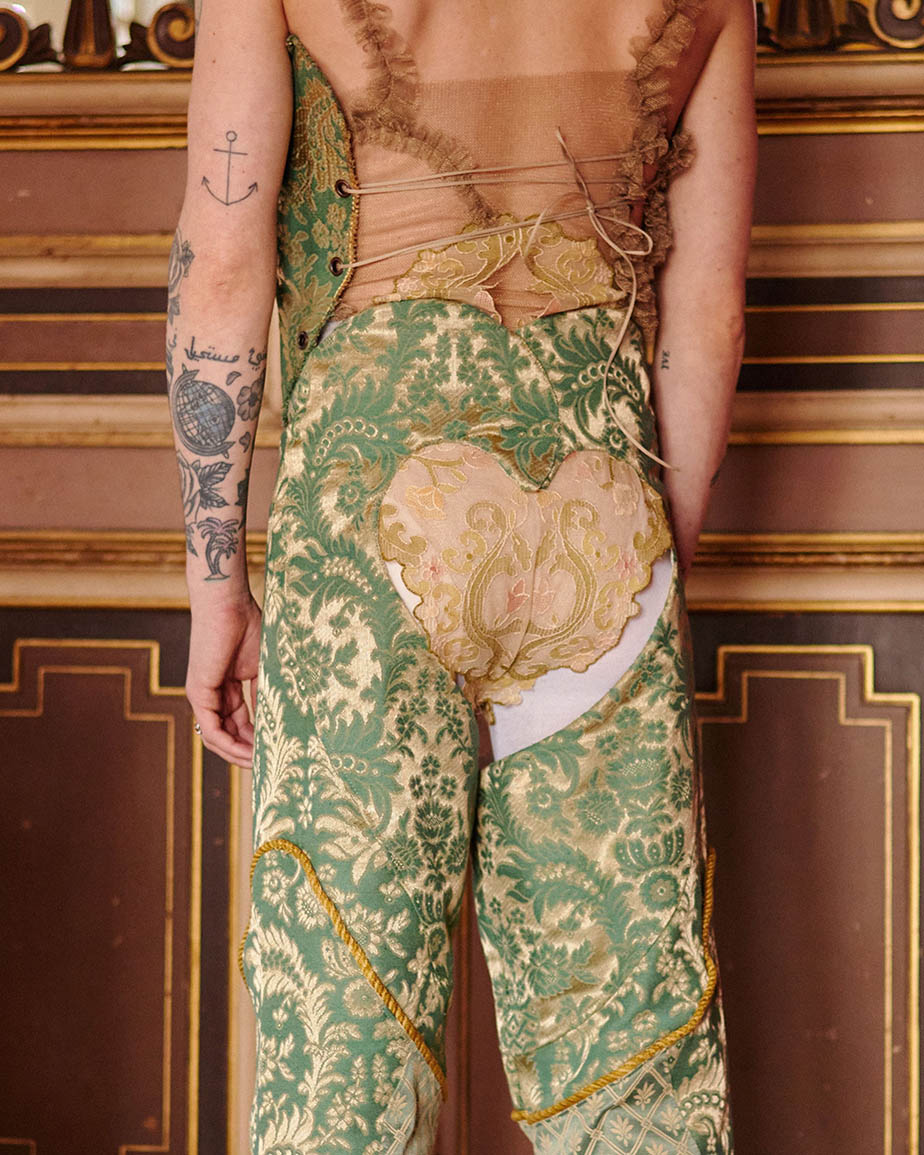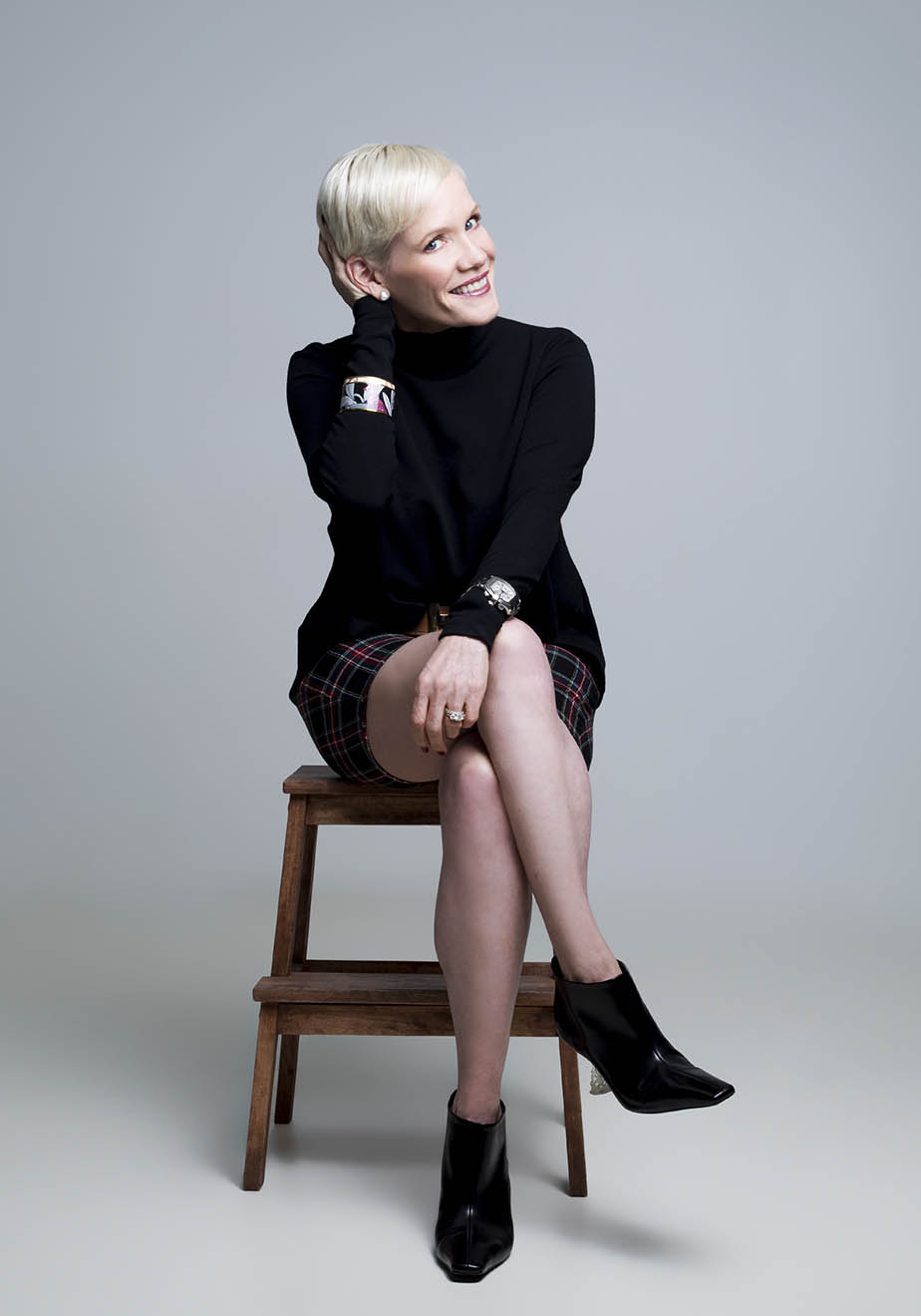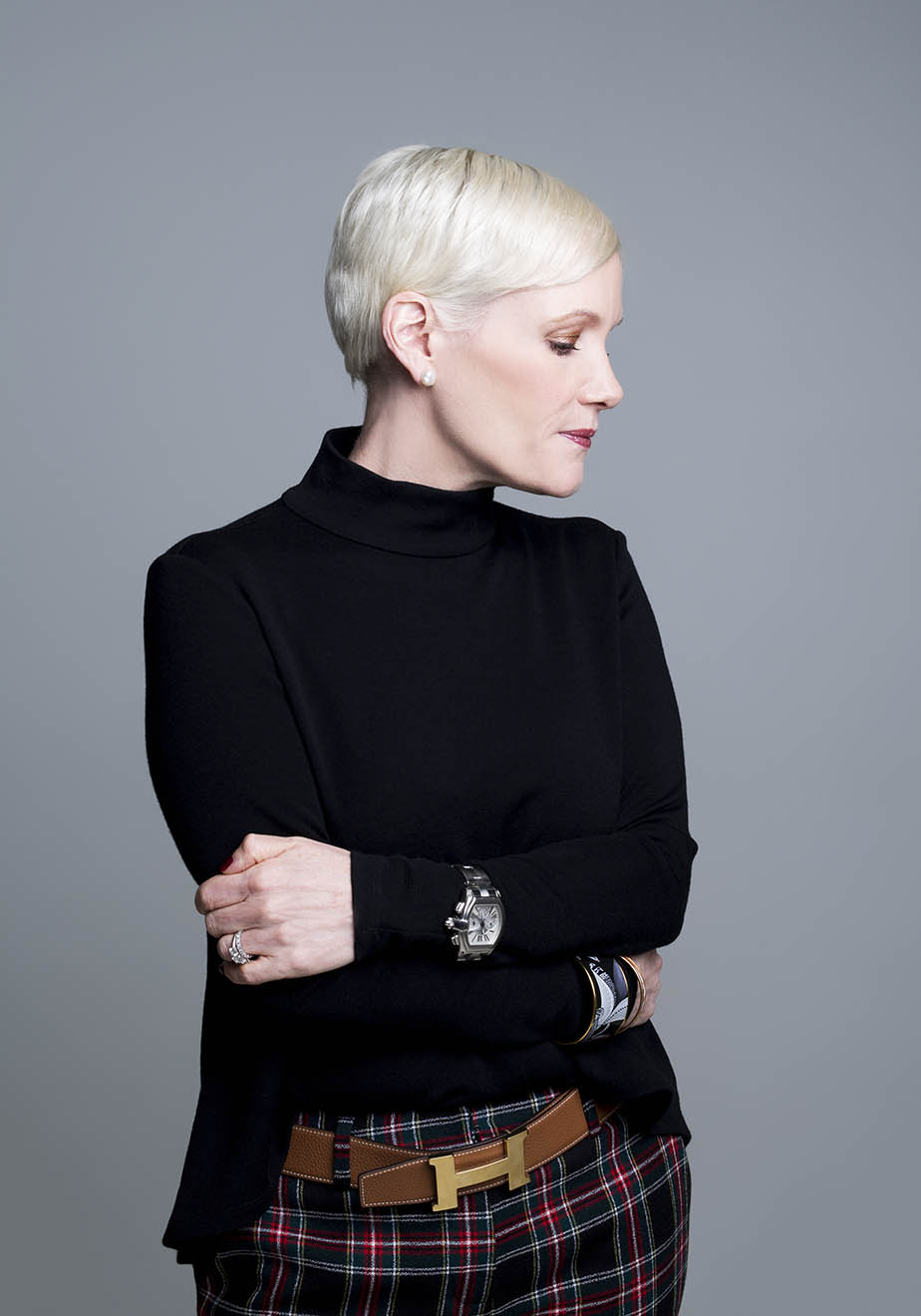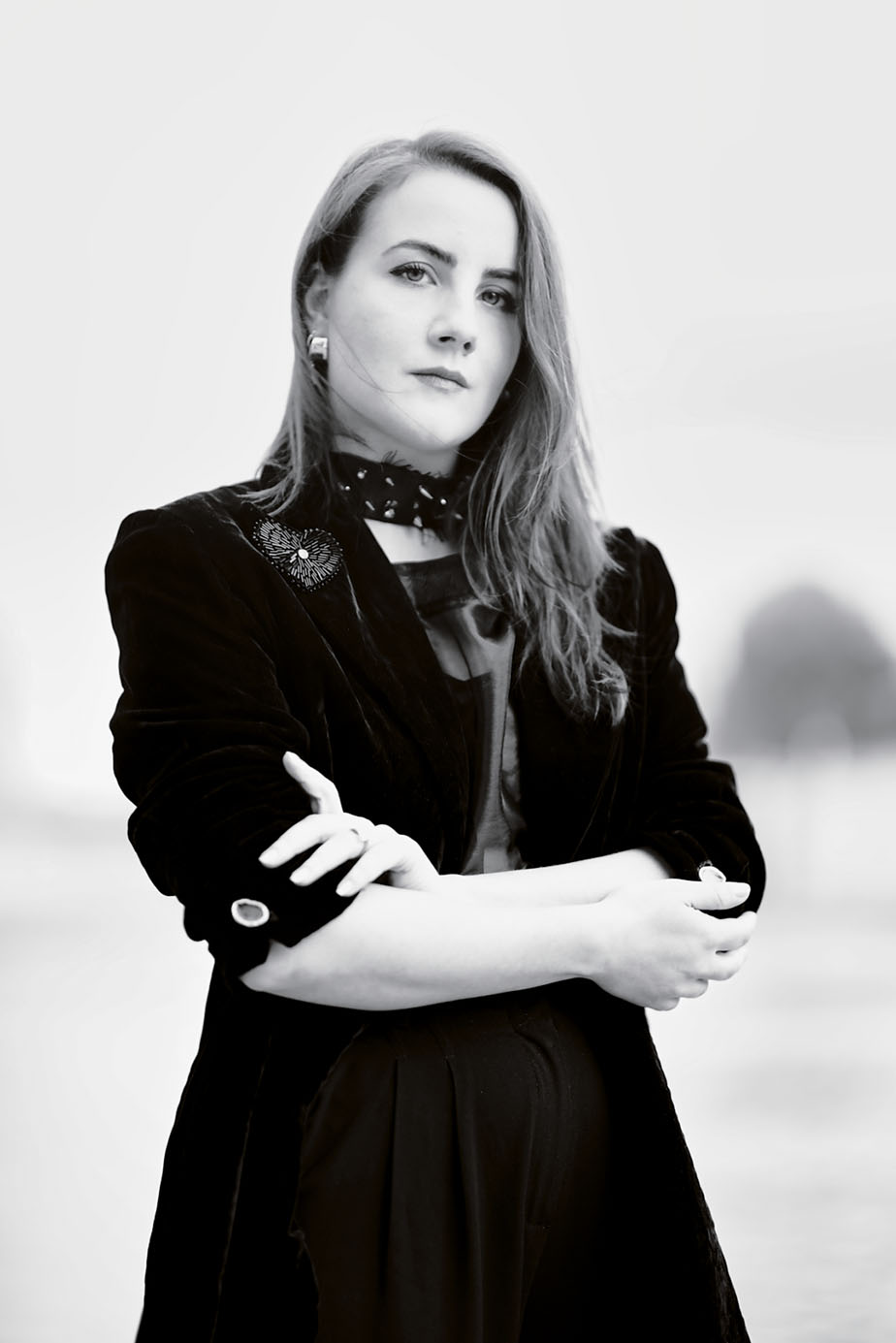
Téa Nassi is a Parisian-based designer from Albania. She started her career in finance before quitting her day job to pursue her dream in Paris. She studied fashion design in a Parisian school and launched her brand under her own name.
She finds inspiration for her concepts in human psychology, optical illusions, and modern art. She enjoys blending classic cu4cts with a twist of fantasy, stylistically, for refined, cultivated women but with a streak of extraverted fun.
Sassy & Co magazine recently caught up with Téa to discuss her journey in the fashion industry and here’s what went down:
How did you get into the fashion industry?
I grew up in post-communist Albania when there were no fashion schools, and choosing a career was motivated first by financial security. I followed a scientific baccalaureate, studied finance, and nailed a 9 to 5 job in accountancy. Nevertheless, I’d spend hours sketching outfits in our building’s staircase from a very early age, and it never left me. So, at the age of 25, I took a huge leap of faith, quit my job, left my country, and moved to France to study fashion design. I first became an au-pair, had to follow a 6-month crash course in French, put money aside, and nine months later, I was ready to apply to a fashion school in Paris.
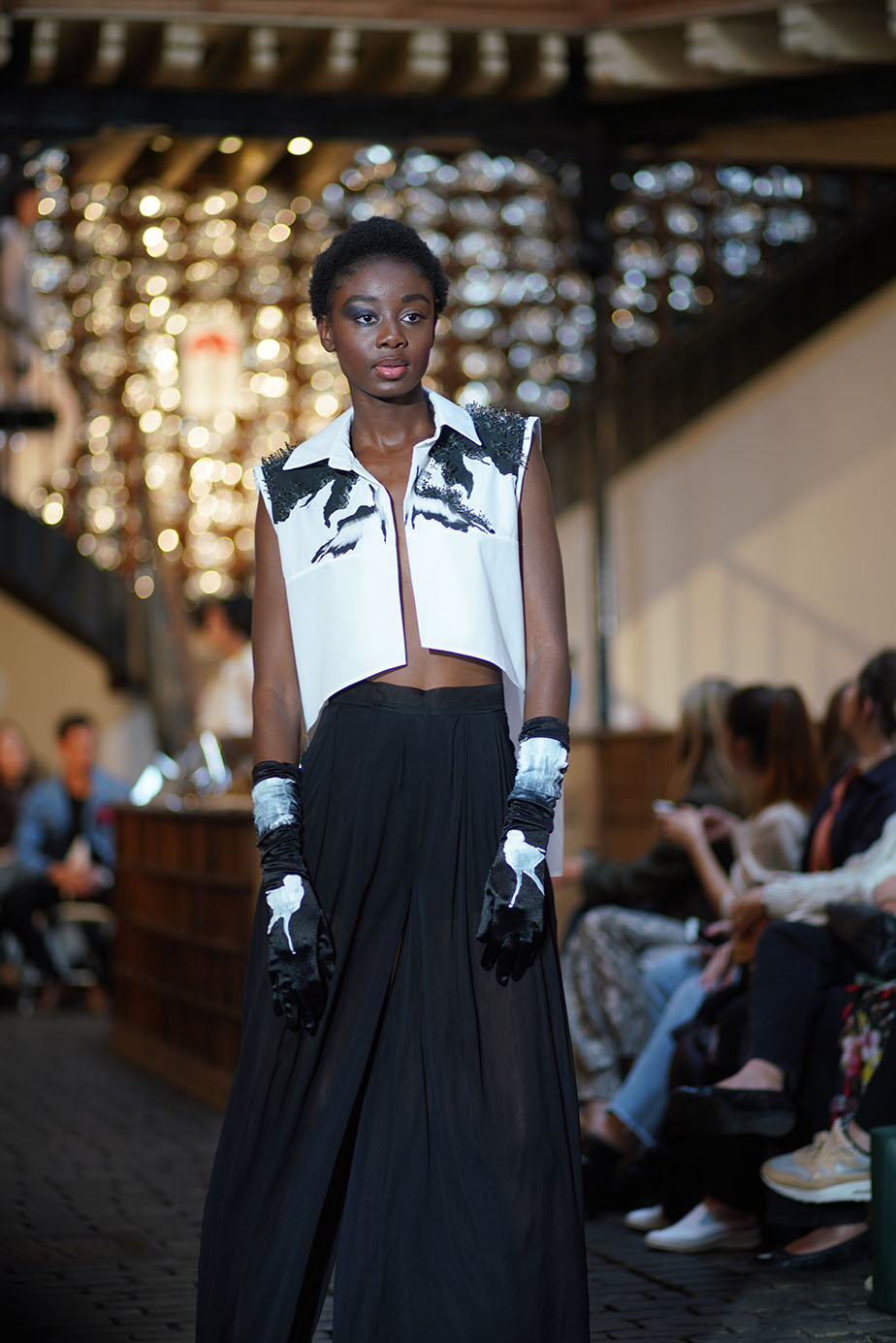
What do you like most about being a designer?
Where do I start? It’s a wonderful, applied art form that sublimates an everyday necessity into a means of self-expression. I love the transformation process of the industry, from a shapeless piece of fabric to an accomplished work of art.
On a personal level, I love the challenge it requires to reinvent myself in each new collection. Putting in the hours, doubting, researching, starting all over again from scratch, until finally the outfits are finished, and I can feel the pride of seeing them worn.
Downside to being a fashion designer?
Putting in the hours, doubting, researching, starting all over again from scratch! Jokes aside, we currently have the massive responsibility of reinventing one of the world’s most polluting and irresponsible industries. We must slow down, produce less and more intelligently, against everything that has been done for decades. It represents huge stress for all involved, including emerging brands such as mine. While the big brands have the teams and means to imagine new processes, new designers have to carry the burden of finding solutions alone, and at times we feel like small fish in a huge pond.
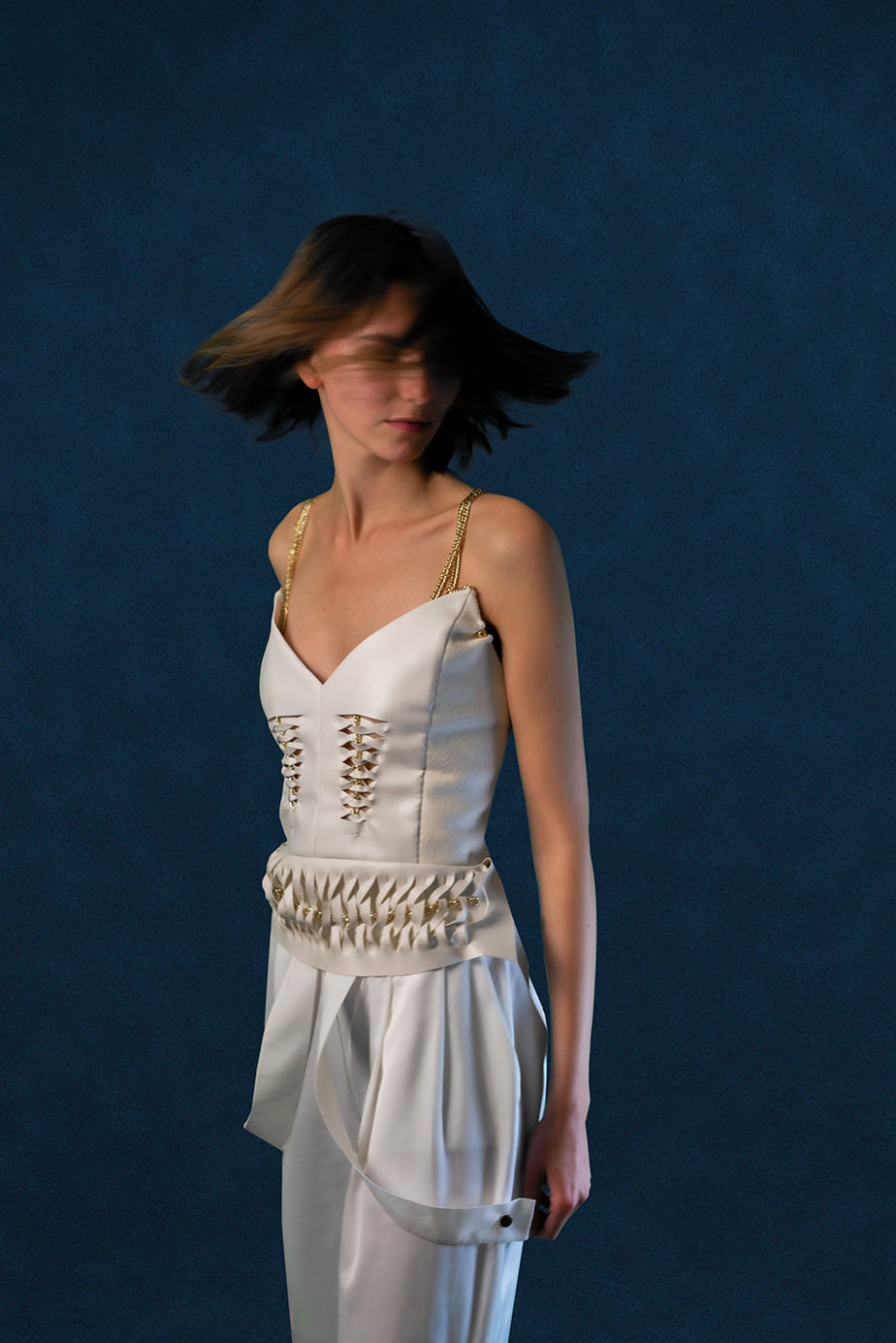
What has been the most memorable experience of being in the fashion industry so far?
My very first catwalk! The feeling of accomplishment overwhelmed me after such a long journey. I knew instantly I was in the right place and had made the right choices; it motivated me, like nothing else, to pursue the path I had chosen.
Who have been the most interesting people you’ve met so far?
I like to surround myself with many interesting people from all walks of life. But the most interesting person I’ve met is my own father! He’s a secretive but fascinating person who never complains but always finds solutions to every possible problem he encounters. He is a true inspiration for me, and even though he is not part of the industry, I strive to apply his soft skills to my own work every day.
On a professional level, I wouldn’t want to differentiate one person from another; I sincerely thank all my professors and collaborators who have taught me invaluable lessons.
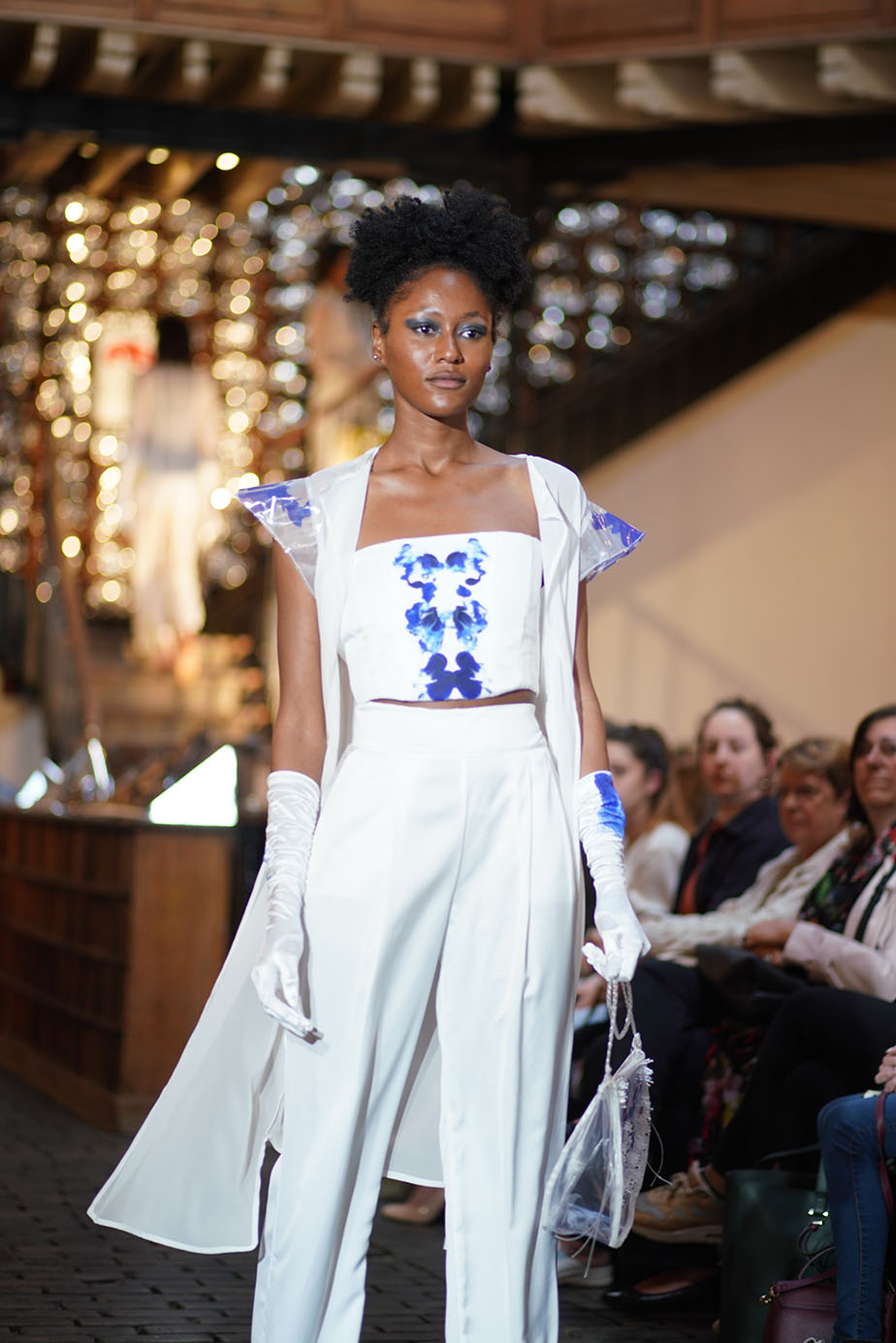
What has been the most valuable lesson you’ve learned while in the fashion industry? This can be about the industry or about yourself.
I had a valuable but frustrating experience learning the following lesson. I preferred to follow other people’s advice on several occasions instead of listening to my own creative instinct. I would put enormous amounts of work into something I didn’t personally believe in. Unsurprisingly, I would have to undo everything to start all over again and follow my initial hunch! Hence the lesson would be: take in the advice but don’t let it stray away from your instinct. And don’t be reluctant to put in the hours; inspiration comes working.
Is your family supportive of you being a fashion designer?
My parents were born and grew up in Communist Albania. So naturally, their outlook on life is not risk-driven. When I told them at age 25 that I was willing to quit my safe situation in Tirana and leave to Paris to study fashion without even knowing the language, they were naturally worried about my life choices. Yet today, on the contrary, they are so supportive!
My grandmother was a dressmaker; my mother is also talented with a needle and a thread. She’s the one I call every time I need technical advice; she’s even pulled off quite a few sleepless nights to help me!
As for my partner, we work side by side every day, and he helps me with everything. He specializes in graphic/motion design and has helped me with my branding and photo edits… but we also love to discuss artistic viewpoints and regularly brainstorm on my brand. It’s a loving, virtuous circle!
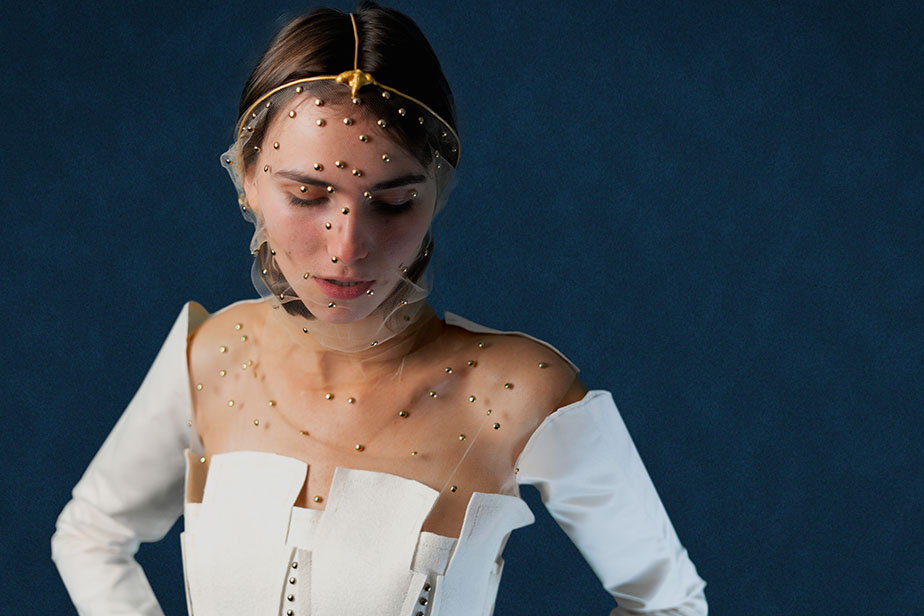
If you could go back in a time machine to the time when you were just getting started, what would you do differently?
I strongly believe in the four spiritual laws of Hinduism. The second law states, “What happens is the only thing that could have happened.” And it must have been like that for us to learn that lesson and move on.
But all the while knowing it, I regret not having listened to my inner voice earlier. Instead of studying fashion straight after school, I studied finance for security. So as that spiritual law has it, finance was so unlike me that I believe it was probably exactly what I needed to find the courage to give up everything I had and study fashion design.
What is the best advice you have ever been given?
My first drawing teacher, Sylvie Fontaine, once told me that if I wanted to succeed as a designer, then all my energy must be focused on that one goal. Hence that meant for me to see the whole world through the eyes of a fashion designer. Movies, art, experiences, books, everything surrounding me should become wells of inspiration. I thank her as it has become my lifestyle ever since, and it really does produce tangible results.
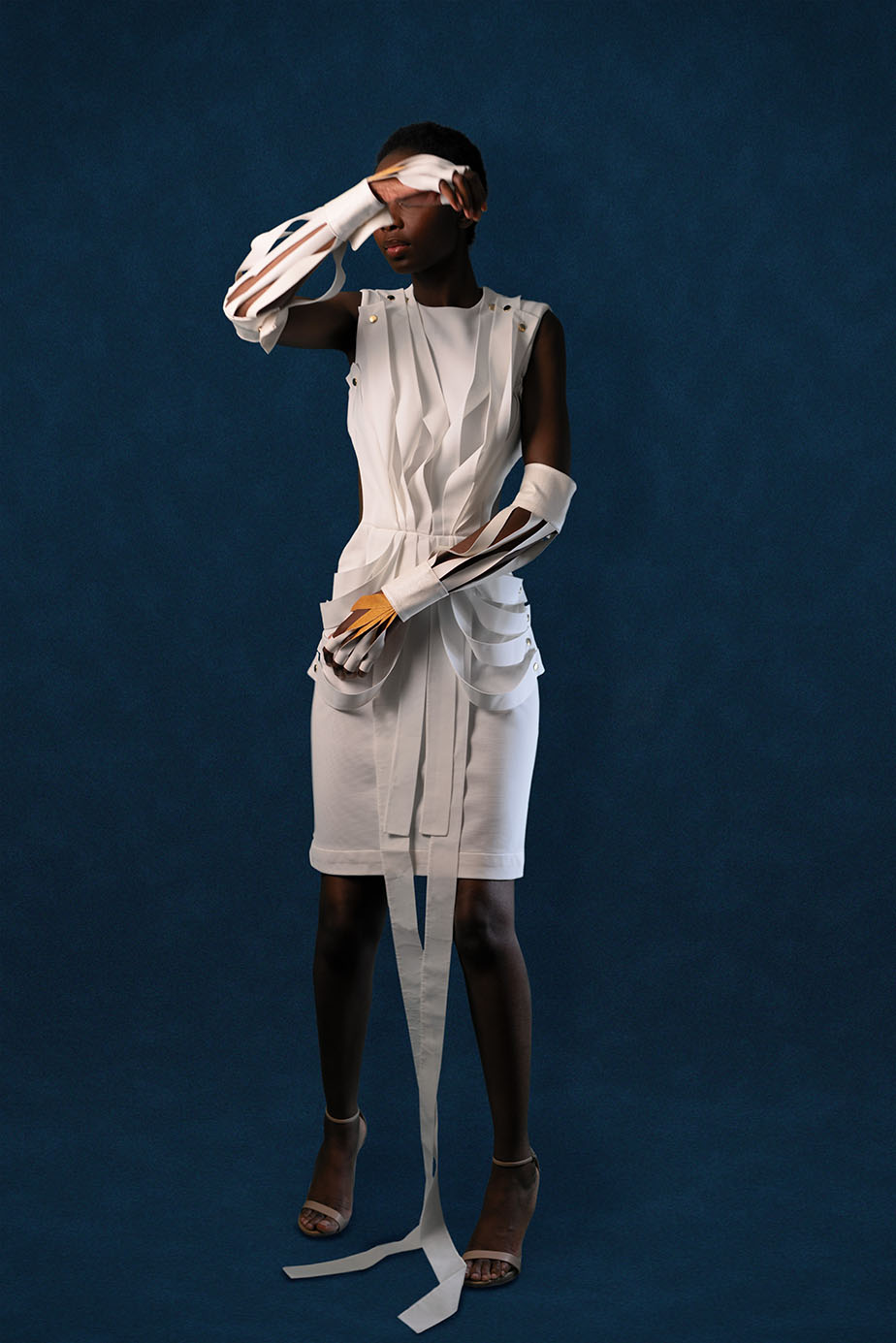
What are your future plans? Inside your career or out of it.
My immediate plan is to finish and publish my next collection, but my future plan is to expand my brand and achieve my first stand-alone runway.
In the distant future, I’d like to open a fashion school in Albania and provide young Albanians with the French savoir-faire I acquired. It’s a small country with huge potential, but it suffers from a fleeing young population who relocate in the hope of finding more opportunities elsewhere (been there, done that). It would be my contribution to my beautiful country of birth and heart.
